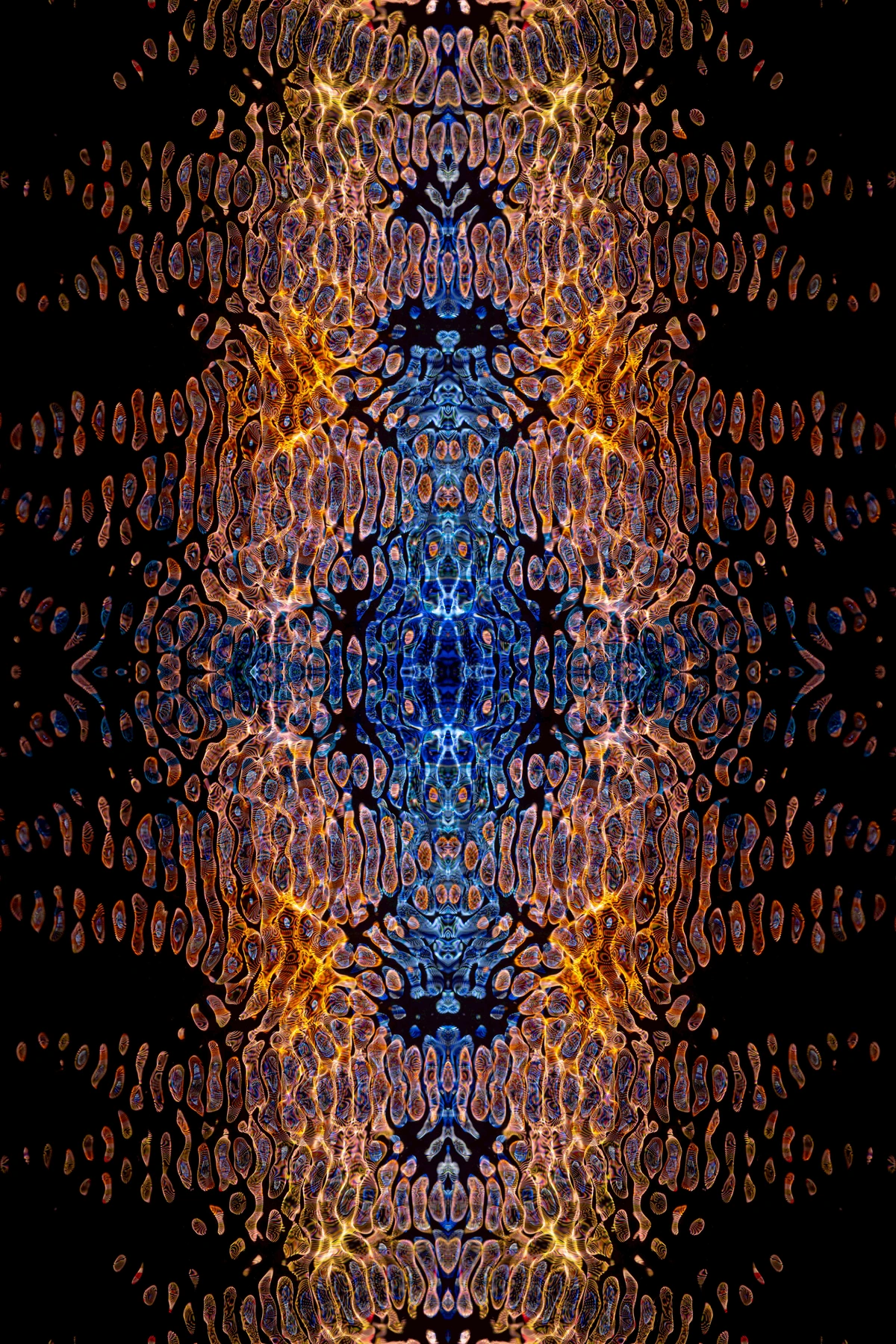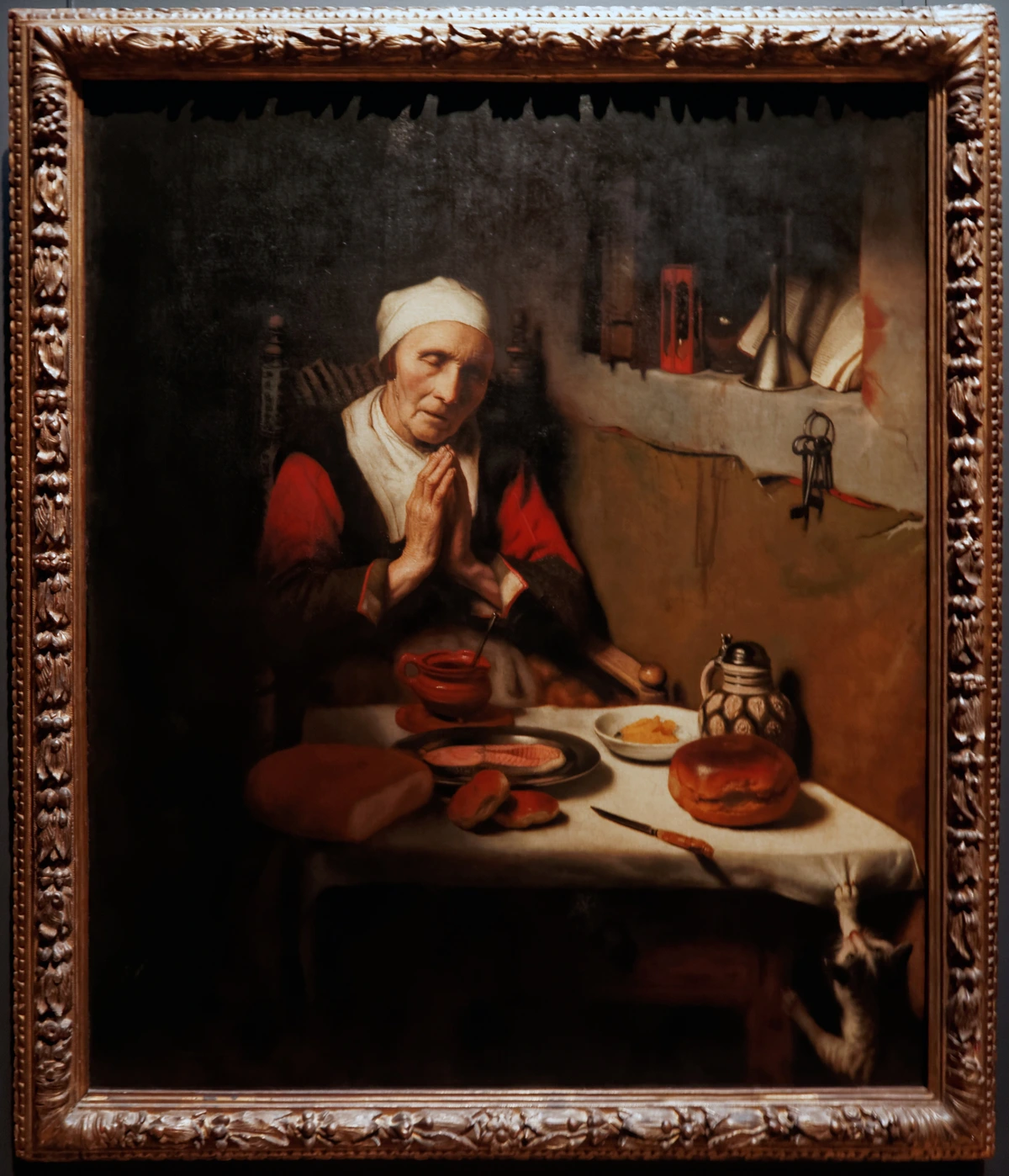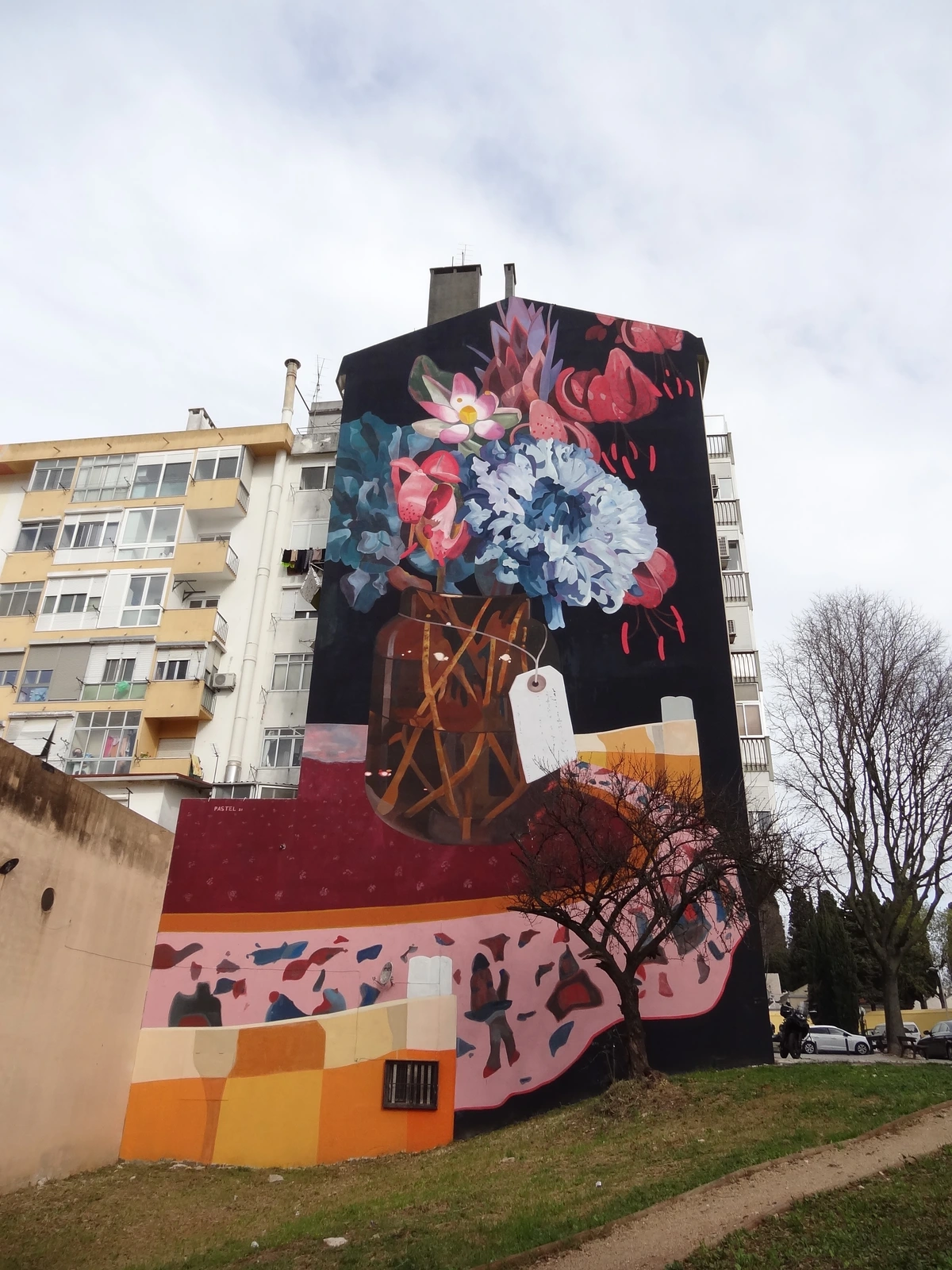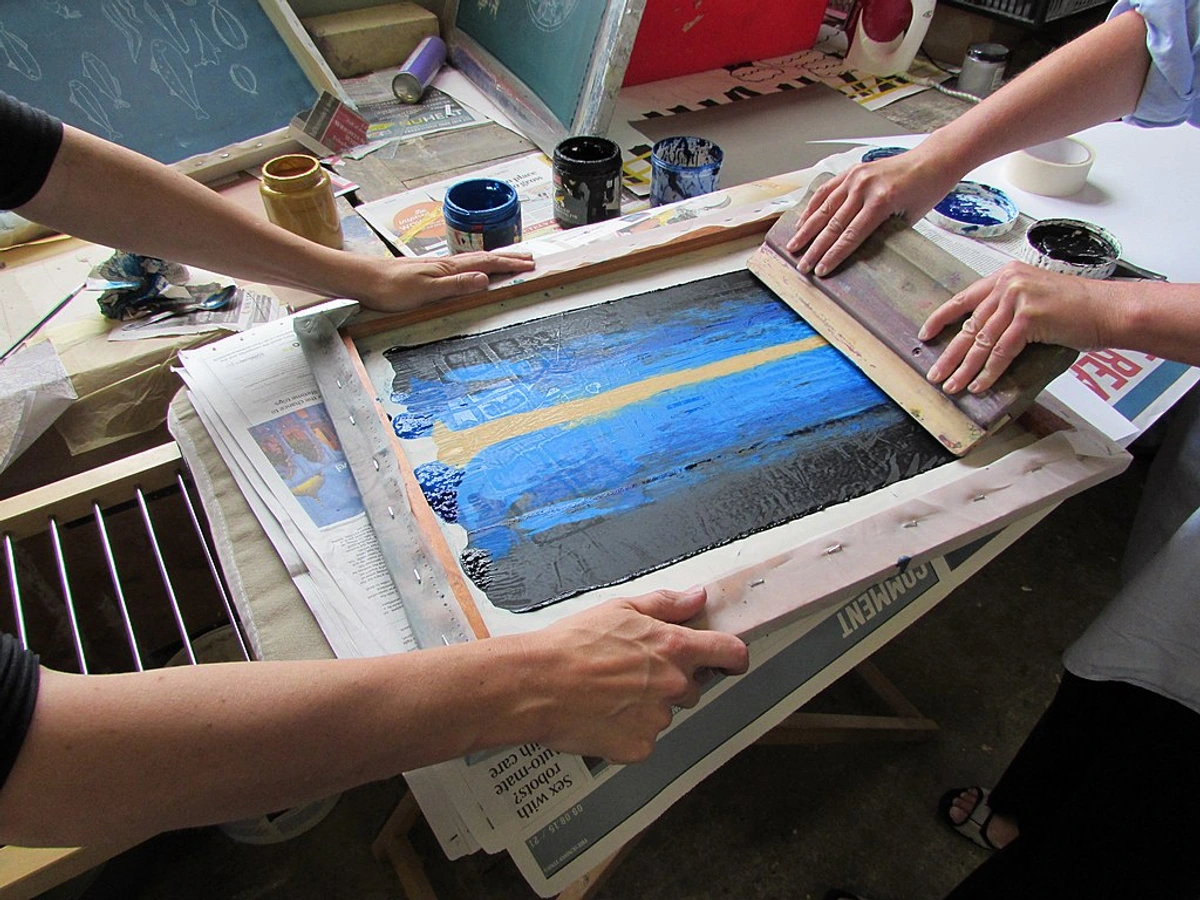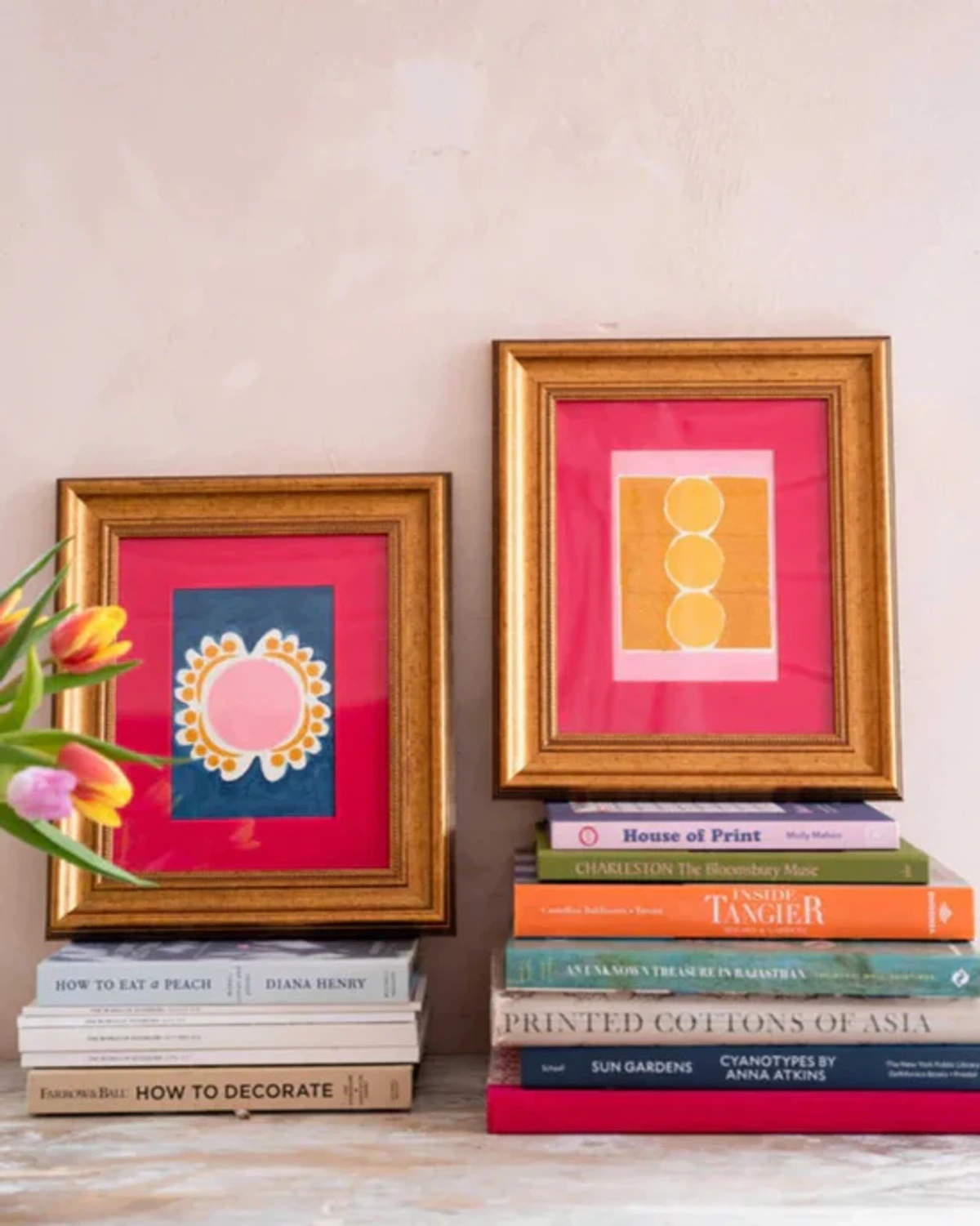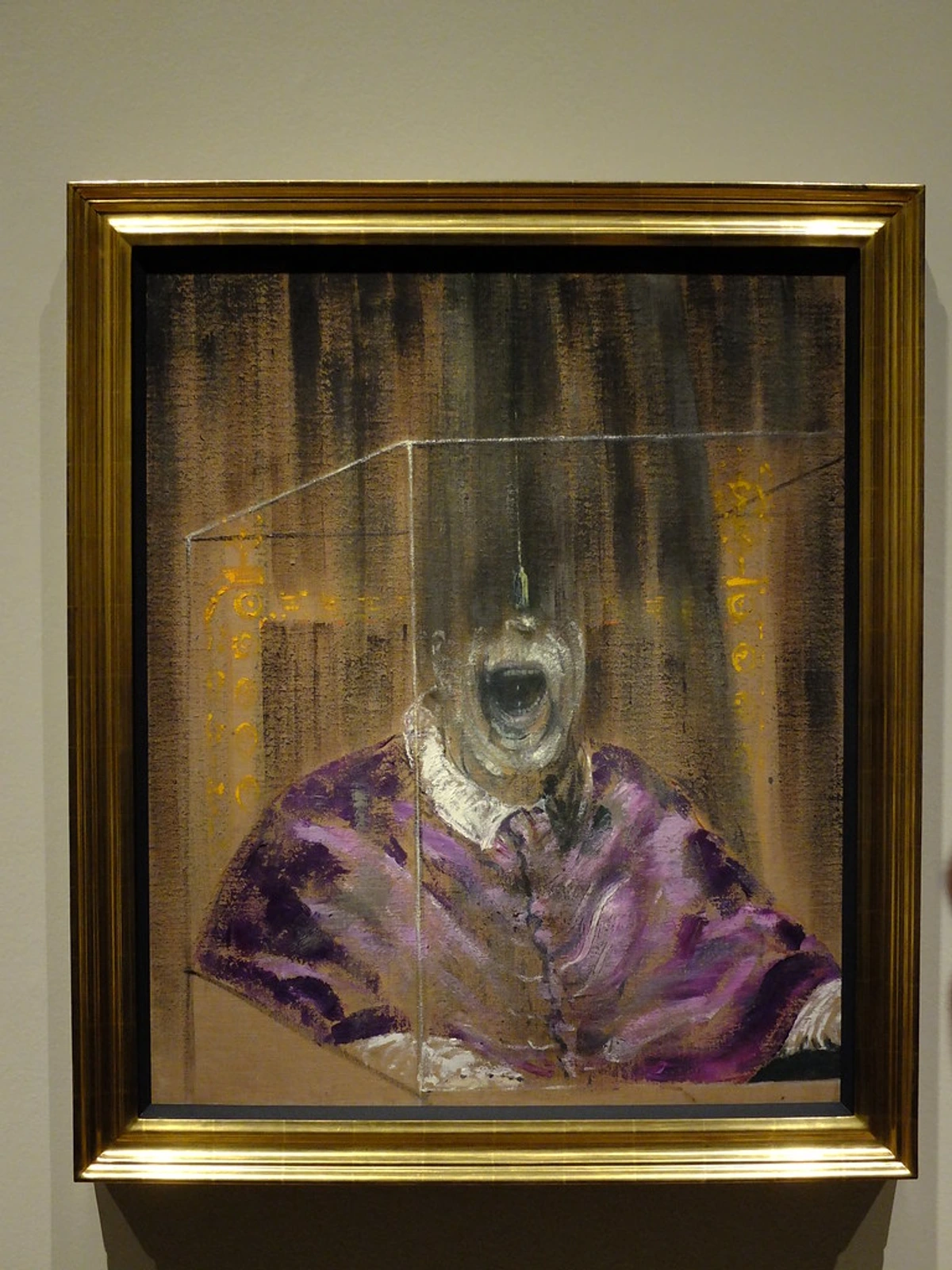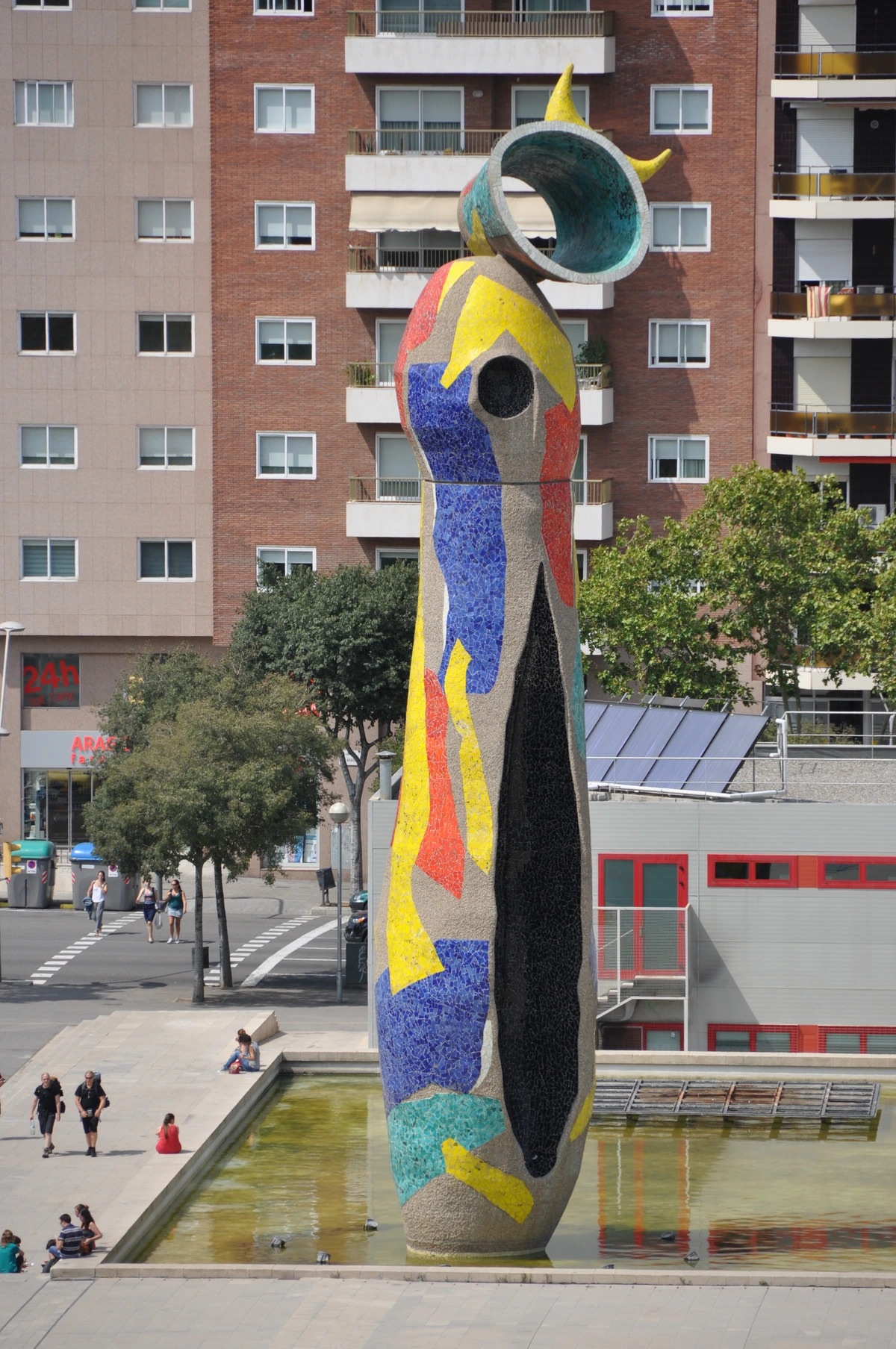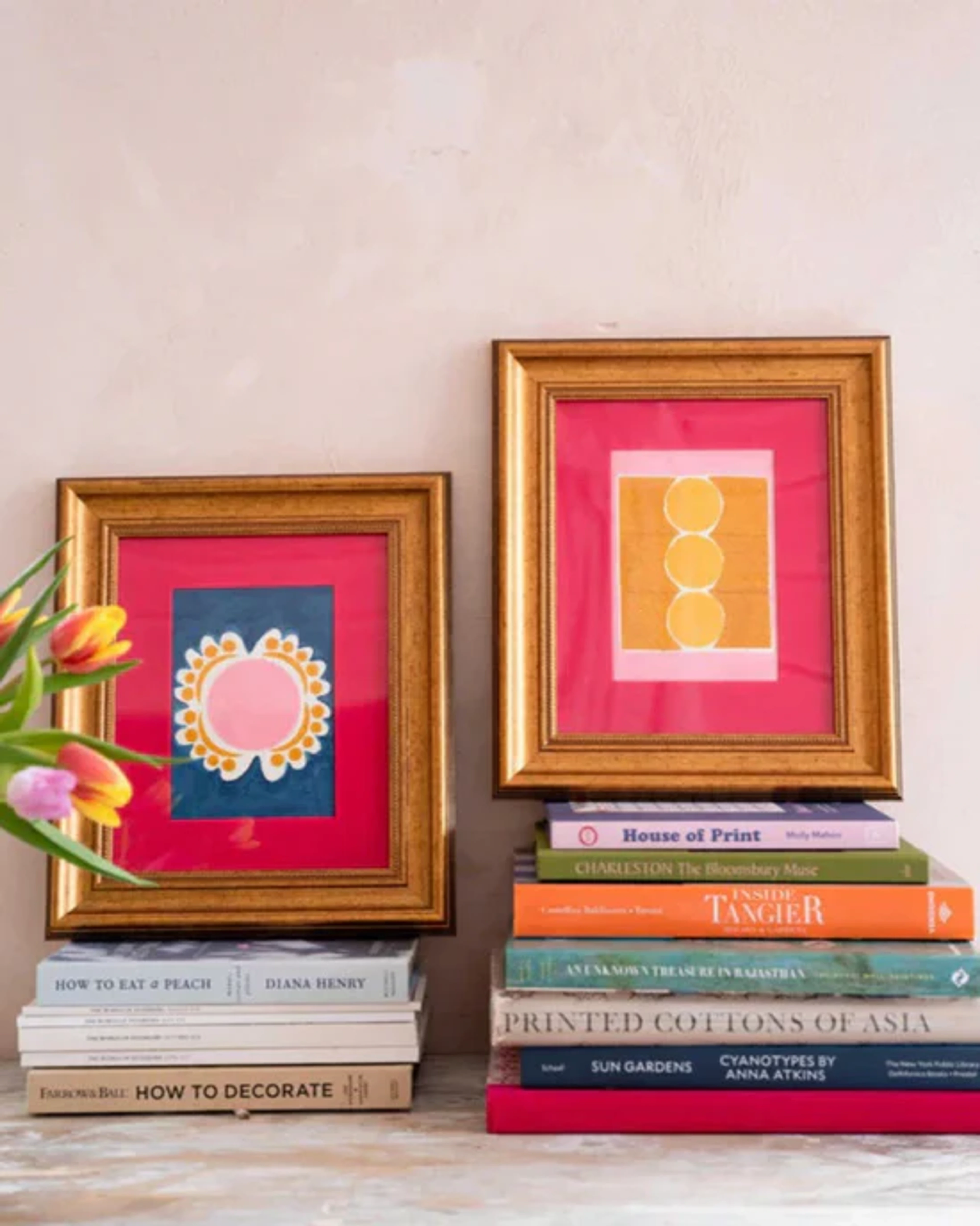
How to Choose Art for Your Kitchen: A Practical Decorator's Guide
Transform your kitchen! Learn practical tips from an artist on choosing art that withstands kitchen life, complements your style, and fills your cooking space with personality and joy.
The Ultimate Guide to Choosing Art for Your Kitchen: A Practical Decorator's Handbook
I know what you're probably thinking. "Art in the kitchen? Isn't that just asking for trouble?" And yes, the thought of grease splatters, humidity from boiling pots, and the occasional rogue pasta sauce incident giving your beautiful artwork a hard time is enough to make anyone pause. You're not entirely wrong to be cautious! I’ve certainly had my share of close calls with a rogue whisk or an overzealous stirring spoon. But trust me, as someone who lives and breathes art, and (let's be honest) eats and cooks a lot, bringing art into the kitchen is one of the most transformative, soul-stirring things you can do for your home. This isn't just a utilitarian space; it’s where life happens, where memories are made, and it deserves just as much personality and soul as your living room. It's time to transform your everyday kitchen into a vibrant, inspiring culinary art gallery – and yes, we're going to break a few outdated 'rules' along the way.
My goal here isn't just to tell you what to put in your kitchen, but how to think about it. We're going to dive deep into the practicalities – what art materials can truly take the heat (literally!), how to pick themes and colors that truly sing with your existing decor, and where on earth to actually place your kitchen art for maximum impact and enjoyment. Consider this your personal, slightly quirky, but utterly comprehensive guide to turning your kitchen into a dynamic, inspiring space. Let's get cooking and make your kitchen art choices truly delicious!
This isn't just another decor trend; it's a philosophy. Your kitchen is the bustling heart of your home, a space where flavors mingle, laughter echoes, and daily rituals unfold. Why confine artistic expression to the living room or bedroom when this vibrant hub begs for its own visual narrative? From a subtle splash of color to a bold statement piece, kitchen art has the power to elevate the mundane, infuse personality, and even spark culinary creativity. Imagine a kitchen that feels less like a workspace and more like a carefully curated gallery, reflecting your unique taste and passions. It’s an exciting challenge, and I’m here to show you exactly how to navigate the unique considerations of this dynamic environment to create something truly spectacular.
I know what you're probably thinking. "Art in the kitchen? Isn't that just asking for trouble?" And yes, the thought of grease splatters, humidity from boiling pots, and the occasional rogue pasta sauce incident giving your beautiful artwork a hard time is enough to make anyone pause. You're not entirely wrong to be cautious! I’ve certainly had my share of close calls with a rogue whisk or an overzealous stirring spoon. But trust me, as someone who lives and breathes art, and (let's be honest) eats and cooks a lot, bringing art into the kitchen is one of the most transformative, soul-stirring things you can do for your home. This isn't just a utilitarian space; it’s where life happens, where memories are made, and it deserves just as much personality and soul as your living room. It's time to transform your everyday kitchen into a vibrant, inspiring culinary art gallery – and yes, we're going to break a few outdated 'rules' along the way.
My goal here isn't just to tell you what to put in your kitchen, but how to think about it. We're going to dive deep into the practicalities – what art materials can truly take the heat (literally!), how to pick themes and colors that truly sing with your existing decor, and where on earth to actually place your kitchen art for maximum impact and enjoyment. Consider this your personal, slightly quirky, but utterly comprehensive guide to turning your kitchen into a dynamic, inspiring space. Let's get cooking and make your kitchen art choices truly delicious!
This isn't just another decor trend; it's a philosophy. Your kitchen is the bustling heart of your home, a space where flavors mingle, laughter echoes, and daily rituals unfold. Why confine artistic expression to the living room or bedroom when this vibrant hub begs for its own visual narrative? From a subtle splash of color to a bold statement piece, kitchen art has the power to elevate the mundane, infuse personality, and even spark culinary creativity. Imagine a kitchen that feels less like a workspace and more like a carefully curated gallery, reflecting your unique taste and passions. It’s an exciting challenge, and I’m here to show you exactly how to navigate the unique considerations of this dynamic environment to create something truly spectacular.
More Than Just Decoration: Why Art Belongs in Your Kitchen
For far too long, kitchens have been relegated to purely functional spaces, often stripped of the very elements that make a house a home – personal expression and beauty. But I firmly believe this is a missed opportunity! Your kitchen is where the magic happens, where nourishing meals are crafted, and where some of life’s most cherished moments unfold. Why shouldn’t it be a source of daily inspiration, a reflection of your unique taste, and a vibrant extension of your artistic sensibilities? It's about bringing soul into the sizzle, color into the culinary, and making every moment in this vital space feel a little more meaningful. Think of your kitchen as a living canvas, just waiting for your personal touch. It’s a bold statement, but your kitchen can and should be a sanctuary of both flavor and visual delight. After all, if art can transform a living room, imagine what it can do for the dynamic heart of your home!

What We'll Cover: Your Roadmap to a Masterpiece Kitchen
In this comprehensive guide, we'll journey through every aspect of curating the perfect art for your kitchen, transforming it into a space that truly reflects your unique style and passion. We'll explore:
- The 'Why': Delving into the profound psychological and aesthetic benefits of kitchen art, as well as acknowledging the unique environmental challenges and how to overcome them.
- The 'What': A deep dive into truly durable art materials and forms that are not just beautiful but genuinely resilient, able to withstand the heat, humidity, and occasional splatters of a bustling kitchen.
- The 'How': Practical, actionable advice on choosing themes and colors that perfectly harmonize or boldly contrast with your existing decor, ensuring a cohesive and captivating look.
- The 'Where': Uncovering creative and practical solutions for positioning art in various kitchen zones, from traditional wall space to surprising, often-overlooked surfaces and corners.
- The 'Care': Essential tips and best practices for maintaining, cleaning, and protecting your kitchen art, ensuring its longevity and vibrant appeal for years to come.
- The 'Troubleshooting': Answering your most frequently asked questions and addressing common dilemmas to ensure your art choices are not just beautiful but also perfectly suited to your lifestyle.
Consider this your essential toolkit, brimming with insights and personal reflections from someone who genuinely believes art belongs everywhere – especially where the magic happens! My aim is to empower you to make informed, inspired decisions that will turn your kitchen into a constant source of joy.
The Heart of the Home: Why Your Kitchen Deserves Art
Beyond the Utilitarian: The Case for a Culinary Canvas
First, let's acknowledge the elephant in the room: the kitchen is a profoundly functional space. It's a high-traffic, high-activity zone, and unlike a serene bedroom or a quiet study, it's not always kind to delicate things. This unique environment – with its heat, steam, oil, and potential for enthusiastic (or accidental!) splashes – means we need to be smart and strategic about our choices for kitchen wall art. But don't let that deter you! This challenge is actually an incredible opportunity to get creative and think outside the traditional gallery box, pushing the boundaries of what 'art' can be in a home setting. You know, I once tried to display a beautiful, but unprotected, charcoal drawing in my kitchen, thinking a corner shelf would be safe. Let's just say it became a rather abstract piece very quickly, with an unexpected seasoning of olive oil and a faint smell of garlic. Lesson learned, and a humbling reminder that practicality must temper passion, at least sometimes! This unique blend of practical demands and artistic aspirations is precisely what makes kitchen art so fascinating and rewarding. It's about finding innovative solutions that celebrate both form and function, proving that beauty can indeed thrive in the busiest heart of the home. It challenges us to reconsider what 'art' truly is and how it integrates into our daily lives.
I remember working with a client who was initially hesitant to put anything beyond a calendar in her kitchen. Her words were, "It's just a place to cook!" But after a thoughtful discussion and a few carefully selected, durable abstract prints, she called me beaming. "My kitchen feels alive now!" she exclaimed. That's the power of art, even in the most functional of spaces. It transforms the mundane into the magical, turning a simple room into a source of constant delight and inspiration. It's a testament to how even a subtle artistic presence can completely shift the energy and perception of a space.
I mean, think about it. Your kitchen is often the undeniable heart of the home, the place where everyone gathers, shares stories, and fuels up. Why should such a pivotal space be bland, purely functional, or simply utilitarian? A well-chosen piece of art can transcend mere decoration; it can elevate the entire space, inject personality, evoke specific moods, and make those everyday moments of chopping veggies, stirring pots, or sipping morning coffee feel a little more special, a little more you. It’s about creating an atmosphere, a palpable feeling – whether that's calm, focused energy for meal prep, or sophisticated charm for entertaining. For me, that feeling is pure, unadulterated joy. It transforms a room for cooking into a culinary sanctuary, a space where creativity thrives as much in the meals as it does on the walls. It's about elevating the everyday, making the act of preparing food an experience rather than a chore. What's more, art can subtly influence the perceived value of your home; a curated space speaks volumes about attention to detail.
Fostering Connection: Art as a Conversation Starter
Beyond personal inspiration, I've noticed that art in the kitchen acts as a natural magnet for conversation. A unique piece can spark dialogue among guests, breaking the ice and adding another layer to shared meals. It encourages people to linger, to discuss, and to connect, transforming a simple gathering into a richer, more engaging experience. It's a subtle but powerful way to infuse your social interactions with a touch of curated charm. I mean, think about it: how many times have you walked into a friend's kitchen and immediately commented on a particularly striking piece of artwork? It provides a natural entry point for conversation, moving beyond the usual pleasantries about food and into deeper, more personal territory. It's like having a silent, artistic host who's always ready to introduce a new topic. I’ve seen a bold abstract piece lead to fascinating discussions about personal interpretations, or a quirky food-themed print spark laughter and shared anecdotes about cooking mishaps.
A Personal Revelation: From Utilitarian to Inspirational
I used to think of my kitchen purely in terms of efficiency – how quickly could I get dinner on the table? But one day, after a particularly draining creative session in my studio, I walked into my bland kitchen and felt a distinct lack of inspiration. It hit me: if art fuels my passion in the studio, why wasn't it fueling my culinary adventures in the kitchen? I decided to hang a small, vibrant abstract print I'd just finished, one with energetic blues and oranges. The change was instant and palpable. Suddenly, cooking felt less like a chore and more like an extension of my creative process. That little print became a silent cheerleader, reminding me that beauty and inspiration can, and should, exist in every corner of our lives. It was a revelation, transforming a functional space into a deeply personal one. This experience cemented my belief that every corner of our home deserves a touch of artistry, a little something that speaks to our soul, especially the kitchen where so much of life unfolds. It wasn't just about the visual appeal; it was about the shift in my own perception and enjoyment of the space. It proved to me, unequivocally, that art has the power to transform the mundane into the magical, even in the most unexpected places. It's a philosophy I now apply to all areas of my life, including my abstract works.
The Sensory Symphony: How Art Enhances the Kitchen Experience
Beyond the visual, art in the kitchen can subtly enhance the entire sensory experience. Imagine a piece with cool, calming blues and greens; it can almost make the kitchen feel cooler on a hot day. Or a vibrant, energetic abstract piece, like many of my own works, that seems to hum with the sizzle and pop of a stir-fry. Art isn't just something you see; it's something that contributes to the overall feeling of the space, a silent partner in your culinary adventures. It transforms a room from purely utilitarian to truly experiential. Imagine the gentle clinking of pans, the aromatic spices swirling, and a piece of art that seems to pulsate with the same energy. Or perhaps a calm, muted piece that offers a visual respite amidst the hustle and bustle, a moment of quiet contemplation while the pasta boils. It's about crafting an immersive environment where all your senses are engaged, making every moment in the kitchen a richer, more vibrant experience. I've found that pairing a dynamic abstract piece with upbeat background music can even make mundane meal prep feel like a dance.

Beyond Aesthetics: The Unexpected Benefits of Kitchen Art
Beyond simply looking good, art in the kitchen offers a surprising array of benefits that truly enhance your daily life. I've found that a thoughtfully chosen piece can:
- Spark Creativity: Staring at a blank wall while you're trying to invent a new recipe? Not very inspiring! A dynamic abstract piece or a vibrant still life can awaken your imagination, encouraging you to experiment not just with flavors, but with presentation too. It’s like having a little muse watching over your culinary adventures, nudging you towards bolder spice combinations or more elegant plating. Art becomes a silent partner in your culinary exploration, pushing boundaries in both food and aesthetics.
- Boost Mood & Energy: Colors and compositions have a profound psychological impact. A splash of bright, energetic hues can kickstart your morning coffee routine, while a calming landscape might make evening meal prep feel less like a chore and more like a meditative act. Your kitchen art can be a daily dose of visual therapy, turning mundane tasks into moments of appreciation. It's a subtle but powerful way to influence the emotional temperature of your busiest room. I've found that even a small piece of art with uplifting colors can completely shift my mindset during meal prep, turning it from a chore into a moment of mindful creativity. Think about how a bold yellow abstract can infuse your space with optimism, or a deep blue piece can bring a sense of serene focus.
- Define Zones: In open-plan living, kitchens often bleed into dining or living areas. Art can be a brilliant, subtle way to define different functional zones. A large, cohesive piece over a breakfast bar might delineate the casual dining area, while a series of smaller pieces near a prep station can mark it as a creative workspace. This visual segmentation helps create a sense of order and purpose within a larger, fluid space, making each zone feel intentional and distinct. It's like having invisible walls crafted purely from visual cues.
- Reflect Your Personality: More than any other room, the kitchen is a space of personal expression through food. Why shouldn't your walls tell a similar story? Art is a powerful tool to showcase your unique tastes, passions, and even your sense of humor. It tells guests who you are before you even offer them a snack, setting the tone for shared experiences and inviting genuine connection. For example, a quirky vintage print might hint at a playful spirit, while a sophisticated abstract from my collection might signal a love for modern design.
- Encourage Conversation: A unique piece of art is an instant conversation starter. It sparks questions, shares stories, and invites connection, turning a simple meal into an engaging experience. I love hearing guests share their interpretations of a piece I've chosen for my own kitchen – it adds another layer to the evening, making gatherings more memorable and interactive. It moves the conversation beyond the mundane, into shared appreciation and personal reflection.
- Increase Home Value: While often overlooked, thoughtful and well-integrated art can subtly enhance your home's perceived value and appeal. It signals a curated, cared-for space, making it more attractive to potential buyers who appreciate attention to detail and a sense of style. It’s a subtle upgrade that speaks volumes, suggesting a home that has been lovingly considered and designed, demonstrating an investment in aesthetics beyond mere functionality. Think of it as adding a layer of sophisticated polish.
- Promote Wellness & Mindful Living: In our fast-paced world, the kitchen can be a source of stress. Art offers a subtle antidote. A calming landscape or a soothing abstract can encourage a more mindful approach to cooking and eating, transforming meal prep into a meditative practice. It’s about creating a sanctuary where you can pause, breathe, and appreciate the simple beauty of daily life. For more on this, consider exploring how mindful-moments-how-abstract-art-can-be-a-gateway-to-inner-peace-and-reflection can apply to any room. And let's be honest, in a world that often pulls us in a million directions, a visual anchor of calm in the kitchen can be truly invaluable. This subtle but profound benefit contributes to a more balanced and enjoyable home life, making your kitchen a true sanctuary, a space where you can genuinely recharge.
- Seasonal Refresh: Art offers an effortless way to refresh your kitchen's aesthetic with the changing seasons or your evolving tastes. Swapping out a few prints or adding a seasonal sculpture can completely transform the mood and palette of your space without a major overhaul, keeping your kitchen feeling dynamic and alive year-round. It's a quick, impactful way to keep your environment inspiring, without needing a full renovation. For example, a vibrant floral print in spring, and a warm-toned abstract in autumn.
The Practicalities: What Kind of Art Can Survive the Kitchen?
This is where we get down to brass tacks. Not all art is created equal when it comes to kitchen resilience. You wouldn't wear your best silk dress to knead dough, right? Same principle applies here. We need materials that can withstand the unique challenges. It's about finding that sweet spot where artistic expression meets robust durability, ensuring your chosen pieces can truly thrive in the heart of your home.
Materials to Consider (and Absolutely Love!):
When I'm advising clients, or even choosing for my own kitchen, I always lean into materials that offer both beauty and brawn. We need art that can take a little heat, a little splash, and still look utterly fabulous. This isn't just about survival; it's about art that thrives in its environment, enhancing the space without constant worry.
- Acrylic Prints or Panels: These are, in a word, fantastic. The image is typically printed directly onto or face-mounted behind a clear, high-quality acrylic sheet, which acts as a robust protective layer. This makes them incredibly durable, a breeze to clean with just a damp cloth, and highly resistant to moisture, humidity, and even direct splatters. Plus, their inherent luminosity and sleek, frameless presentation offer a beautifully modern and contemporary look that I just adore. They're surprisingly versatile, fitting seamlessly into minimalist, industrial, or even transitional kitchen designs. I especially love how lightweight some of these panels can be, making installation a surprisingly simple DIY project for many homeowners. They’re also a fantastic choice for showcasing vibrant abstract pieces, as the acrylic can intensify the colors and depth, almost making them glow. The high-gloss finish of acrylic can add a touch of modern luxury, reflecting light beautifully and making the kitchen feel brighter and more expansive. For a deeper dive into the medium, consider exploring the principles in best-acrylic-mediums-for-abstract-artists for a better understanding of the material's potential and how it truly brings out the vibrancy in a piece. The inherent depth and almost three-dimensional quality of acrylic prints make them a showstopper.
- Metal Prints: Imagine your chosen artwork infused directly onto a sheet of high-grade aluminum. Sounds pretty tough, doesn't it? That's because it is! Metal prints are renowned for their incredible vibrancy, rich color saturation, and exceptional durability. They are naturally waterproof, highly scratch-resistant, and incredibly easy to wipe down – making them ideal for even the busiest kitchen zones. The sleek, often glossy finish of metal prints can introduce a wonderfully contemporary, almost industrial-chic edge to a kitchen, reflecting light in a way that truly brings the art to life. They can also be custom-cut to nearly any size or shape, offering unparalleled flexibility in placement, even in unusual nooks or as part of a custom backsplash design. I often find myself drawn to metal prints for abstract pieces with strong lines and bold colors, as the medium truly accentuates their dynamism. Their resistance to fading and moisture makes them particularly suitable for sunny kitchens or those prone to steam, retaining their crispness and color integrity for years. I often recommend them for high-impact areas, like a splashback zone or above a bustling prep counter, where their easy-clean nature is a huge bonus. Plus, the frameless nature of many metal prints creates a clean, uninterrupted visual flow that can make a kitchen feel larger and more open. Consider also the type of metal – aluminum is common for its lightweight and rust-resistant properties, while other metals might offer unique patinas. Different finishes, from high-gloss to brushed metal, can also dramatically alter the artwork's presentation and integration with your kitchen's existing metal accents. I've seen brushed metal prints add a sophisticated, understated elegance, while high-gloss options offer maximum vibrancy. Their ability to handle temperature fluctuations without warping also makes them superior to many other mediums in a dynamic kitchen environment. This makes them a perfect match for kitchens with a modern or industrial interior design, where their sleekness truly resonates.
- Canvas Prints (Protected): A good quality canvas print, especially one that has been expertly coated with multiple layers of a protective, UV-resistant varnish or sealant, can do surprisingly well in a kitchen environment. This protective layer is crucial for repelling moisture, resisting stains, and guarding against airborne grease. When I talk about 'protective varnish,' I mean a professional-grade, non-yellowing artist's varnish, often with UV inhibitors, that creates a barrier over the entire surface. Canvas offers a softer, more textural aesthetic than the slickness of acrylic or metal, bringing a classic art feel. Just ensure it's properly and professionally sealed to maximize its longevity and ease of cleaning. If you're curious about canvas preparation, how-to-apply-gesso-to-canvas-a-beginners-guide or what-is-gesso-in-painting might offer some insights into surface protection principles, though for the kitchen, I'd always recommend a specialist sealant on top of any gesso. While they require a bit more care than acrylic or metal, their ability to soften the hard lines often found in kitchen architecture makes them a wonderful choice for adding warmth and approachability. Just be mindful of their placement; direct, heavy splatters are still best avoided, even with the best protection. When choosing canvas, look for archival-quality canvas and stretcher bars to prevent warping and degradation over time. The type of protective varnish is also crucial: a UV-resistant, non-yellowing artist's varnish, often applied in several layers, will provide the best defense against kitchen elements. This professional-grade sealant creates a barrier that not only protects against moisture and grease but also makes the surface easier to clean without damaging the artwork beneath. I always emphasize multiple thin layers for comprehensive protection. This approach can also bring a touch of the modern farmhouse aesthetic into your kitchen, providing warmth and texture.
- Framed Prints (Under Glass/Acrylic): This is a timeless classic for a reason. Framing a print (whether it's a reproduction, a photograph, or even an original drawing you've had professionally protected) behind glass or museum-grade acrylic provides a crucial, impenetrable barrier against kitchen elements like steam, splatters, and dust. The key is to choose a sturdy frame material – think metal, high-quality sealed wood, or even a durable composite – and ensure the backing is well-sealed to prevent moisture ingress. For optimal protection, consider UV-filtering glass or acrylic to prevent fading, especially if the art is near a window. When it comes to cleaning, a quick wipe down with a gentle glass cleaner is typically all that's needed, making them wonderfully practical. Just avoid ammonia-based cleaners, as they can sometimes damage acrylic over time. The frame itself also offers an opportunity for artistic expression; choose one that complements your art and kitchen style, whether it’s a sleek minimalist frame or a more ornate, classic design. I also love how a well-chosen mat board can create a sophisticated visual buffer between the art and the frame, further enhancing the presentation and drawing the eye to the artwork itself. When selecting a frame, consider materials like sealed woods, metals, or durable composites that resist moisture. For the glazing, options range from standard glass to museum-grade acrylic which offers UV protection and is shatter-resistant – a wise investment for a busy kitchen. Always ensure the backing is well-sealed to prevent moisture ingress, effectively creating a protective micro-environment for your print. For an even deeper dive into framing considerations, a chat with an expert framer, as hinted at in qa-with-an-expert-art-framer, could provide invaluable insights. Don't underestimate the power of a well-chosen mat board, either; it creates breathing room around the art and can visually enhance the piece, especially in a busy kitchen setting. This framing strategy is also highly effective for creating gallery walls that remain protected.
- Tiles or Ceramic Art: Talk about truly integrated art! If you're really committed to a unique, lasting artistic statement, custom art tiles or ceramic pieces can be permanently installed as part of your kitchen's architecture, perhaps as a backsplash or an accent wall. This offers the ultimate in durability and a wonderfully artisanal touch, becoming an intrinsic part of the space. Imagine a hand-painted floral motif or that vibrant geometric tile backsplash I once saw; it was practically a work of art itself, blending functionality with breathtaking beauty. And if you're a DIY enthusiast, there are even options for creating your own hand-painted or glazed tiles for a truly personal touch! You can learn more about this versatile medium in introduction-to-ceramics-history-techniques-and-contemporary-practice. For a seamless look, consider matching the tile art's color palette with your existing kitchen fixtures or creating a bold contrast to make it a true statement. Tiles also offer incredible texture, which adds another dimension to the visual experience. Imagine using handcrafted tiles to create a dynamic backsplash or even an entire accent wall, turning a functional necessity into a permanent artistic installation. They offer a tangible, often earthy feel that can ground a modern kitchen or enhance a rustic aesthetic. Beyond custom designs, many commercially available art tiles offer intricate patterns or subtle textures that can create a sophisticated, easy-to-maintain artistic statement. This is truly art that becomes part of the very fabric of your home. When working with tiles, consider different ceramic types like porcelain (very durable and non-porous) or earthenware (more porous but offers a rustic charm if properly sealed). The choice of glaze and grout is also vital for durability and ease of cleaning, especially if used as a backsplash. For a high-impact installation, consider consulting with a tile artist or installer to ensure longevity and a professional finish. Hand-painted ceramic tiles, sealed with a durable glaze, can transform a plain backsplash into a truly bespoke art installation that tells a unique story about your home and tastes. This approach elevates the kitchen beyond the purely functional, into a realm of artisanal craftsmanship and personal expression.

Other Durable Art Options to Explore
Beyond the staples, there's a whole world of artistic expression that can thrive in a kitchen setting with a little thoughtful consideration. I'm always looking for unexpected ways to bring art into daily life, and the kitchen is no exception – it just requires a bit more strategic thinking! This blend of creativity and practicality is, after all, what makes kitchen art so uniquely rewarding.
- Printed Glass Splashbacks: For the ultimate blend of functionality and artistic statement, a custom printed glass splashback can transform an entire wall into a seamless artwork. The image (whether a photograph, abstract design, or custom pattern) is printed onto the back of toughened glass, making it incredibly durable, heat-resistant, and effortlessly easy to clean. This creates a striking, modern focal point that is both beautiful and highly practical, merging art with architectural necessity. It’s an investment that delivers both visual 'wow' factor and long-term resilience, becoming an integrated piece of your kitchen's design.
- Backlit LED Art Panels: This is where cutting-edge technology meets art! Imagine a vibrant abstract image or a serene landscape printed on a translucent material and then backlit with energy-efficient LED lights. These panels are not only incredibly durable (often protected by acrylic or tempered glass), but they also provide their own light source, creating a dynamic, luminous focal point that changes the mood of your kitchen. They're often sealed against moisture and are a surprisingly easy way to add a modern, high-tech gallery feel. While a larger investment, the 'wow' factor is undeniable – I mean, who doesn't love a bit of subtle drama in their cooking space? They pair beautifully with minimalist or industrial aesthetics. When considering backlit LED panels, think about the color temperature of the LEDs – warm white for a cozy glow, or cool white for a more contemporary, gallery-like feel. Many modern panels also offer dimming capabilities and even color-changing options, allowing you to adapt the mood of your kitchen at the touch of a button. They represent a significant investment but offer unparalleled visual impact and technological sophistication. Consider them for areas where you want to create a truly immersive experience, perhaps above a breakfast bar or as a focal point in a sleek, contemporary kitchen.
- Enamel on Steel or Copper: This ancient art form involves fusing powdered glass onto metal at high temperatures, creating a vibrant, durable, and naturally waterproof surface. Enamel art pieces, whether small decorative panels or larger installations, offer incredible depth of color and a jewel-like finish. They are highly resistant to heat and moisture, making them an exceptionally resilient option for the kitchen, and surprisingly easy to wipe clean. Plus, the unique sheen of enamel adds a touch of bespoke luxury, a handcrafted feel that mass-produced items just can't replicate. The specific techniques, like cloisonné or champlevé, can add unique textural and visual interest, making each piece truly one-of-a-kind.
- Sealed Photographs: High-quality photographic prints, especially those face-mounted to acrylic, printed directly on metal, or laminated, offer stunning visual impact with exceptional protection. Even traditional paper photographs can work if expertly framed under UV-protective glass and placed well away from high-splash zones. When I say 'sealed,' I mean completely encapsulated to prevent moisture from reaching the paper – this is key! Think about capturing personal memories, vibrant food photography, or stunning travel vistas! These can be deeply personal and bring a wonderful, narrative touch to your kitchen. The crispness and detail of a photographic print can add a contemporary edge, especially when showcasing abstract close-ups or macro photography of natural elements. I once had a client who printed stunning, vibrant macro shots of spices and herbs on metal panels for her kitchen. It was both beautiful and incredibly personal to her passion for cooking – a truly unique and resilient art display. You can also explore options like photographic wallpaper murals, which, when properly laminated and sealed, can create an immersive visual experience that is both durable and stunning. For a truly unique touch, consider black and white photography for a timeless, sophisticated aesthetic.
- Glass Art (Panels, Sculptures): Stained glass panels, fused glass art, or even sturdy, well-secured glass sculptures can be incredible additions. Glass is naturally non-porous, easy to clean, and refracts light beautifully. Just ensure any glass piece is very stable, securely mounted, and placed where accidental impact or shattering isn't a high risk. Tempered glass, which is far more resistant to breaking, is an excellent choice for any area where safety is a concern. Imagine sunlight streaming through a custom abstract glass panel – pure magic, and surprisingly durable! The way light dances off glass art can truly transform a space throughout the day, offering ever-changing visual interest. Consider fused glass platters hung on a wall, or a mosaic made of colored glass, all of which are incredibly durable and easy to clean. For a practical touch, a glass cutting board with an abstract design can even serve as a functional piece of art when not in use. Additionally, art created with resin, a highly durable and glossy material, can offer a similar non-porous, easy-to-clean surface, often with incredible depth and vibrant colors. Resin art can mimic the look of glass but often offers greater impact resistance. Fused glass, where different colored glass pieces are melted together in a kiln, can create stunning patterns and textures that catch the light beautifully. Consider also glass mosaics for a truly integrated, durable art form. When hanging glass art, always use robust, specialized hardware to ensure stability and safety, especially in a dynamic environment like the kitchen. The interplay of light dancing off glass art can truly transform a space throughout the day, offering ever-changing visual interest, adding a touch of luminous sophistication.
- Wall Decals & Murals: For a less permanent but incredibly impactful statement, high-quality vinyl wall decals can introduce graphic elements, typography, or intricate patterns to your kitchen. They're typically easy to wipe clean and designed for removal without wall damage, offering a flexible artistic solution. For a truly immersive experience, a professionally painted mural (using durable, washable, and ideally food-safe paints) can transform an entire kitchen wall into a masterpiece, often depicting scenes that expand the room or abstract forms that energize it. Just ensure the paint is specifically rated for kitchen use, meaning it can withstand repeated cleaning without degrading. And if you're a fan of street art, a high-quality reproduction of a vibrant piece can bring an incredible urban edge to your kitchen, without the commitment of a full mural. You can find inspiration in articles like an-art-lovers-guide-to-sao-paulo. A truly impactful mural can even create an illusion of greater space, transforming a small galley kitchen into an expansive landscape or a vibrant street scene. These options offer unparalleled customization, allowing you to perfectly tailor the artwork to your kitchen's unique dimensions and desired aesthetic, making it a truly one-of-a-kind space. For wall decals, consider high-quality vinyl with a matte or glossy finish, designed for easy application and removal without damaging paint. Professionally painted murals should use durable, washable, and ideally food-safe paints, ensuring they can withstand the kitchen environment and regular cleaning. Temporary wallpaper, also available in a vast array of designs, offers another flexible option for renters or those who love frequent refreshes. These options offer unparalleled customization, allowing you to perfectly tailor the artwork to your kitchen's unique dimensions and desired aesthetic, making it a truly one-of-a-kind space, whether you want a subtle accent or a dramatic focal point.
Materials to Be Wary Of (or Avoid Altogether):
Look, I'm all for artistic freedom, but some materials and environments just don't mix. In the kitchen, this means exercising a bit of tough love when it comes to delicate artworks. Think of it as protecting your precious pieces from a rather enthusiastic culinary battleground.
- Unprotected Paper Prints or Watercolors: Unless they are robustly protected behind sealed glass or acrylic, paper-based artworks are a definite no-go for the kitchen. The inherent humidity will quickly cause warping, buckling, and potential mold growth, while any accidental splatter (and let's be honest, they happen!) will likely stain or permanently ruin the piece. Even fingerprints can leave marks that are impossible to remove. The fibers of paper and the delicate nature of watercolor pigments simply aren't designed for the rigors of a kitchen environment. These delicate beauties are best saved for drier, less active zones of your home, where their fragile charm can be appreciated without risk. I've seen too many beautiful prints succumb to a rogue steam cloud, and it's always a shame. It's a harsh truth, but paper and kitchen moisture are simply not compatible for long-term enjoyment.
- Delicate Textiles: While I adore textile art (and have written about it extensively in decorating-with-textile-art-weaving-warmth-and-texture-into-your-home), the kitchen's potent mix of grease, steam, and food odors makes it an exceptionally challenging environment for fabrics. They act like sponges, absorbing everything and becoming very difficult to clean without damage. If you absolutely must display a textile piece, ensure it's in a spot very far from any cooking action, ideally enclosed in a display case, and easily removable for professional cleaning – but honestly, I'd recommend against it for long-term enjoyment. Instead, consider textile-inspired prints on durable materials, or use washable textile elements like kitchen towels or tablecloths to bring that warmth in a more practical way.
- Unfinished Wood or Raw Canvas: These materials are absolute sponges for moisture, grease, and odors. Unfinished wood can warp, crack, and even grow mold, while raw canvas will quickly absorb cooking fumes and become stained beyond repair, sometimes developing a rather unpleasant 'kitchen smell' that is nearly impossible to remove. They're best saved for less demanding rooms where their natural, unprotected beauty can be appreciated without succumbing to the kitchen's harsh realities. Even a well-meaning attempt at a DIY raw canvas piece can turn into a greasy, moldy disaster if not properly sealed. Trust me on this one; I've learned from my own unfortunate experiments!
- Oil Paintings (Unvarnished or Delicate): While oil paintings can be quite durable over time, an unvarnished or thinly painted original oil piece can be vulnerable to the kitchen's environment. The oil paint itself is fairly resilient, but without a protective varnish, it can attract grease and dust, making cleaning difficult and potentially damaging. If you have a cherished original oil painting, ensure it's professionally varnished and ideally placed in a low-risk zone, far from direct cooking activity. Some even opt for a protective frame with museum-grade glass for an extra layer of defense against airborne particulates and moisture, effectively creating a sealed micro-environment for the painting. If an original oil painting is a must-have, ensure it's a piece that holds significant personal or monetary value, justifying the extra protection and careful placement. Otherwise, high-quality reproductions on more durable mediums are always a safer bet for the kitchen. Remember, the goal isn't just to display the art, but to preserve its integrity for years to come, especially if it's an heirloom or a significant investment. My philosophy is to protect and cherish original works, often recommending them for a formal dining room or living area instead.
- Textured or Highly Porous Sculptures: While I adore sculptural elements, anything made of unsealed porous materials (like certain types of clay, unglazed wood, or very delicate found objects with intricate textures) will suffer immensely in the kitchen. Their surfaces act as magnets for dust, grease, and cooking odors, becoming nearly impossible to clean thoroughly without damage. These pieces are best saved for a display cabinet in a drier, less active environment where their fragile beauty can be appreciated without risk of deterioration. Even seemingly sturdy items can have delicate surface treatments that are vulnerable to kitchen conditions, so always err on the side of caution – better to protect your cherished art than to regret its inevitable decline. Instead, consider sculptures made of glazed ceramic, metal, or tempered glass for kitchen display, which are much easier to maintain. These materials are not only resilient but also offer a wonderful opportunity to introduce different textures and forms, adding another dimension to your kitchen's artistic narrative. Imagine a sleek metal sculpture catching the light, or a vibrant glazed ceramic piece providing a pop of color and artisanal charm. It's about ensuring that your art choices contribute positively to the environment without becoming a source of constant maintenance anxiety.
Crucial Considerations Beyond Material: Mounting & UV Protection
Selecting the right art material is just the first step in ensuring your kitchen art truly endures and remains beautiful. To safeguard your selections, we also need to think critically about how they're hung and protected from invisible threats. It’s like building a good foundation for a house – without it, even the most beautiful structure can crumble.
- Secure Mounting & Hardware: In a bustling, high-traffic kitchen, stability is paramount. Use appropriate wall anchors and strong hanging systems like D-rings or robust picture wire. For art above a stove or sink, consider flush mounts or security hardware to prevent accidental bumps or falls. Crucially, opt for rust-resistant materials for hooks, wires, and any exposed metal in humid environments. I've seen too many beautiful pieces fall victim to flimsy fixings, which is a heartbreak we want to avoid! For heavier pieces, especially, don't shy away from professional installation or heavy-duty anchors designed for your specific wall type (drywall, plaster, brick, etc.). It's an investment in security that pays off in peace of mind. Remember, in a busy kitchen, a piece of art can easily be bumped or jostled, so choosing robust mounting solutions is a non-negotiable step for longevity and safety. I’ve personally experienced the heart-stopping moment of a picture frame swaying precariously, and it’s not something I wish upon anyone’s precious artwork! Investing in robust picture hanging hardware, like those designed for heavy mirrors or shelving, might seem excessive for a small print, but it's an investment in peace of mind and the longevity of your art. This is especially true for high-traffic areas where accidental knocks are more likely.
- UV Protection: Sunlight, especially direct, intense sunlight streaming through a window, can be surprisingly damaging over time. It can fade colors, degrade pigments, and warp materials, especially in prints and some original paintings. If your chosen art spot receives a lot of natural light, prioritize art materials with inherent UV resistance (like metal or acrylic prints) or framed pieces with UV-filtering glass or acrylic. This is less about immediate kitchen hazards and more about the long-term preservation of your investment. Think of it as sunscreen for your cherished art! For more on protecting your pieces, you might find the-art-of-display:-how-to-light-and-position-abstract-art-for-maximum-impact useful, specifically the sections dealing with light exposure and preservation. Remember, even indirect light over many years can take its toll, so proactive protection is always a good idea for cherished artworks. Also, for truly demanding environments, exploring options like those discussed in choosing-art-for-high-traffic-areas-durability-tips can provide additional insights into robust art solutions. This proactive approach ensures that your cherished pieces remain vibrant and undamaged for generations to come, truly becoming heirlooms rather than fleeting decorations. It's a small investment in foresight that yields immense dividends in artistic preservation. Moreover, UV protection isn't just for fading; it also helps prevent the breakdown of materials over time, maintaining the structural integrity of your artwork. Don't underestimate the power of thoughtful placement in relation to windows and direct light sources.
Here’s a quick summary to help you decide:
Art Material | Pros for Kitchens | Cons for Kitchens |
|---|---|---|
| Acrylic Prints | Extremely durable, easy to clean, moisture/grease resistant, vibrant | Can be reflective (consider placement), might look too modern for some aesthetics |
| Metal Prints | Very durable, waterproof, scratch-resistant, vibrant colors, easy to wipe | Can be heavy (ensure secure mounting), might feel too industrial for some |
| Protected Canvas | Textured look, softer aesthetic, relatively durable (with sealant) | Requires excellent sealant/varnish, still somewhat susceptible to deep stains/odors |
| Framed (Glass/Acrylic) | Excellent protection from splatters/humidity, classic look, wide art choice | Glass can shatter (consider acrylic), heavier, requires proper sealing of frame/backing |
| Ceramic/Tiles | Ultimate durability, fully integrated, waterproof, unique artisanal touch | Permanent installation, limited art choices, complex/costly to change |
| Sealed Photographs | Personal, highly customizable, good durability if well-protected | Requires professional sealing/framing, some still vulnerable to extreme conditions |
| Glass Art | Visually striking, easy to clean, naturally non-porous | Fragile (risk of shattering), requires very secure, stable mounting |
| Wall Decals/Murals | Flexible, easily changed, can be custom-designed, easy to clean | Less 'fine art' feel, can peel in high humidity if not applied perfectly, murals are permanent |
| Backlit LED Panels | Luminous, modern, durable, creates ambient light, focal point | Higher initial cost, requires electrical access, can feel too contemporary for some styles |
Ventilation & Humidity Control: The Unsung Heroes of Art Preservation
I often tell people that the air in your kitchen is just as important as the walls themselves when it comes to art preservation. This isn't just about making your home smell nice after cooking; it's about creating a stable, art-friendly microclimate. Think of it as a subtle but constant act of care for your beloved pieces, ensuring they remain as fresh and vibrant as the day you acquired them.
Beyond material and mounting, the environment of your kitchen plays a massive role in the longevity of your art. This is where we often overlook the subtle but significant impact of air quality and moisture levels.
- Good Ventilation is Key: This isn't just about cooking smells! A powerful range hood that vents outdoors (rather than recirculating) is your art's best friend. It dramatically reduces airborne grease and steam, which are silent enemies of even well-protected artworks. Think of it as a protective shield against the elements inherent to cooking. Investing in a high-quality range hood with strong CFM (Cubic Feet per Minute) is one of the best long-term investments you can make for both your art and your indoor air quality. I always recommend externally vented hoods over recirculating ones for this very reason. Beyond range hoods, consider installing an exhaust fan if your kitchen lacks robust ventilation, or simply open windows and doors during intense cooking sessions to create natural airflow. Good ventilation doesn't just protect your art; it also contributes to a healthier cooking environment by removing odors and reducing the buildup of airborne contaminants. It’s a proactive step that safeguards both your art and your well-being.
- Manage Humidity: Kitchens, by their nature, fluctuate in humidity. While most durable art materials can handle this, extreme or prolonged humidity can still be problematic for frame backings, or even eventually for the protective layers of canvas. Consider a small dehumidifier in particularly humid climates, or simply ensure good airflow by opening a window when cooking. Consistent, moderate humidity is always best for art, and yes, even kitchen art! I've seen firsthand how a consistently humid environment can warp even sturdy wooden frames over time, so proactive humidity control is a simple but effective defense. Simple measures like using lids on pots, running the dishwasher on a cooler cycle, and opening windows after cooking can all contribute to a more art-friendly atmosphere. Consider also the use of humidity-absorbing packets or small, discreet desiccants behind framed pieces in particularly damp areas, though these require regular checking and replacement. Monitoring humidity levels with a simple hygrometer can also be a proactive measure, helping you adjust your approach before any damage occurs. Think of it as maintaining a comfortable climate for your art, just as you would for yourself.
- Placement Away from Direct Heat/Steam: This one seems obvious, but it's worth reiterating. Even the toughest art will degrade faster if it's directly above a steaming pot or a constantly hot stove. Give your art a little breathing room, allowing heat and moisture to dissipate before they reach your chosen piece. It's a simple act of consideration that will add years to its life. After all, a little preventative care goes a long way in ensuring your kitchen art remains a source of joy for years to come. I've seen beautifully curated kitchen art collections that have lasted decades precisely because their owners understood and respected the environmental demands of the space. A few inches of distance can make all the difference.
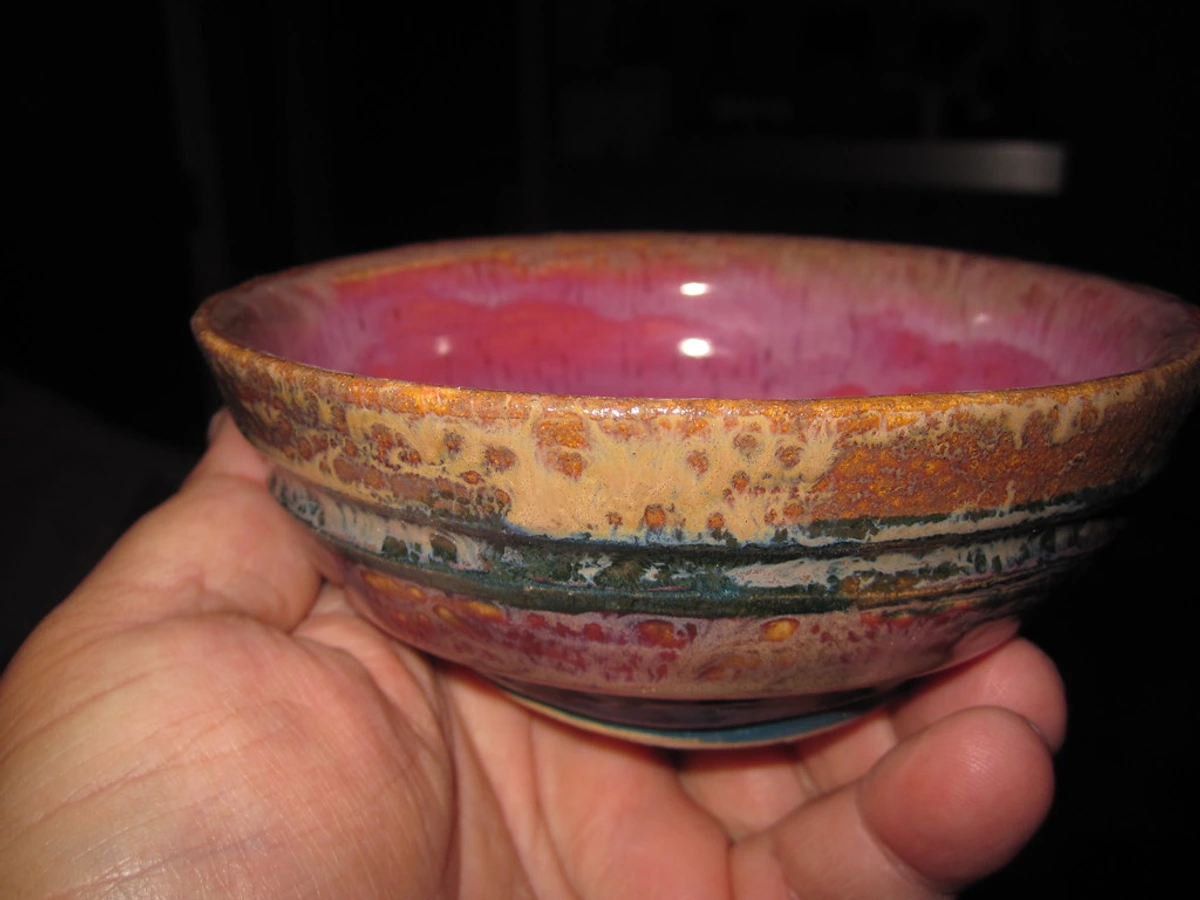
The Importance of Regular Cleaning: A Practical Approach
Even with the most durable materials and thoughtful placement, your kitchen art will inevitably encounter airborne dust, grease, and occasional splatters. Regular, gentle cleaning is not just about aesthetics; it's about long-term preservation. For most kitchen-appropriate art, a soft, dry microfiber cloth for daily dusting is your best friend. For more stubborn marks on non-porous surfaces like acrylic or metal, a slightly damp cloth with a tiny drop of mild, diluted dish soap can work wonders. Always avoid abrasive cleaners or harsh chemicals, as these can easily damage protective layers or finishes. Remember, consistency is key – a minute of gentle cleaning a few times a week is far better than a big, arduous scrub once a month! I've found that incorporating a quick wipe-down into my regular kitchen cleaning routine keeps everything looking pristine without feeling like a chore. For framed art under glass or acrylic, use a gentle glass cleaner specifically formulated for art, or a diluted mix of water and white vinegar, applied to the cloth, not directly to the art. Never rub vigorously, as this could damage protective layers or smear stains further. And if you have framed pieces, occasionally check the back for any signs of moisture ingress, especially in older frames. Remember, preventative maintenance is always easier and more effective than trying to reverse damage once it's occurred. A consistent, gentle approach will keep your kitchen art looking its best for years to come, ensuring your investment retains its beauty. It’s a simple habit that pays significant dividends in the longevity of your cherished pieces.
Finding Your Kitchen's Vibe: Theme and Color Harmony
Understanding Your Kitchen's Existing Style
Before we dive into themes and colors, let's take a moment to really see your kitchen. This is a crucial first step, and honestly, one that many people rush through. Do you want your kitchen to feel like a cozy farmhouse retreat, a sleek modern bistro, a vibrant bohemian hub, or an eclectic explosion of color? I always start by looking at the existing decor – the cabinet style, countertop material, flooring, and overall color palette. These existing elements are your foundation, your canvas upon which your art will either harmoniously blend or boldly contrast. If you're looking for broader kitchen decor ideas, I highly recommend checking out how-to-decorate-a-kitchen for a great starting point to define your foundational style. Consider even the smallest details, like the finish on your hardware or the texture of your backsplash – every element tells a story. Even your appliances, from a sleek stainless steel fridge to a colorful retro oven, contribute to the overall mood. Don't forget to think about how your kitchen connects to adjacent rooms; does it flow into an art-for-minimalist-interiors-less-is-more living space or a decorating-with-art-in-modern-farmhouse-interiors dining area? The goal is a cohesive narrative throughout your home. Moreover, don't overlook how your appliances, from a sleek stainless steel fridge to a colorful retro oven, contribute to the overall mood; art can either complement or deliberately contrast these features to great effect. A truly well-designed kitchen feels like a natural extension of your personal aesthetic, effortlessly blending functionality with artistic flair.
Once you have a sense of your kitchen's core aesthetic, then we can talk about what actually goes on the wall! This is where your personal style really gets to shine. It's about letting your kitchen tell your story, loud and clear.
Theme It Up (or Don't! The World is Your Oyster!):
The 'theme' of your kitchen art isn't about being rigid; it's about telling a story or evoking a feeling. Sometimes, that story is purely visual, without a literal narrative. Here are some themes I've seen work beautifully.
- Food & Drink Related: Obvious, perhaps, but incredibly effective and often wonderfully charming! Think vibrant fruit bowls, charming coffee or tea illustrations, abstract interpretations of culinary ingredients, or even a classic still life painting (like a Dutch Master's feast, but perhaps a high-quality print!). These pieces instantly connect to the function of the room and can be wonderfully inviting, even stimulating appetite and conversation. You could even lean into vintage food advertisements for a nostalgic, quirky touch, or consider a piece like Andy Warhol's Campbell's Soup Cans artwork featuring multiple varieties of soup cans. I've always found that a playful nod to the culinary world can create an instant sense of warmth and welcome.
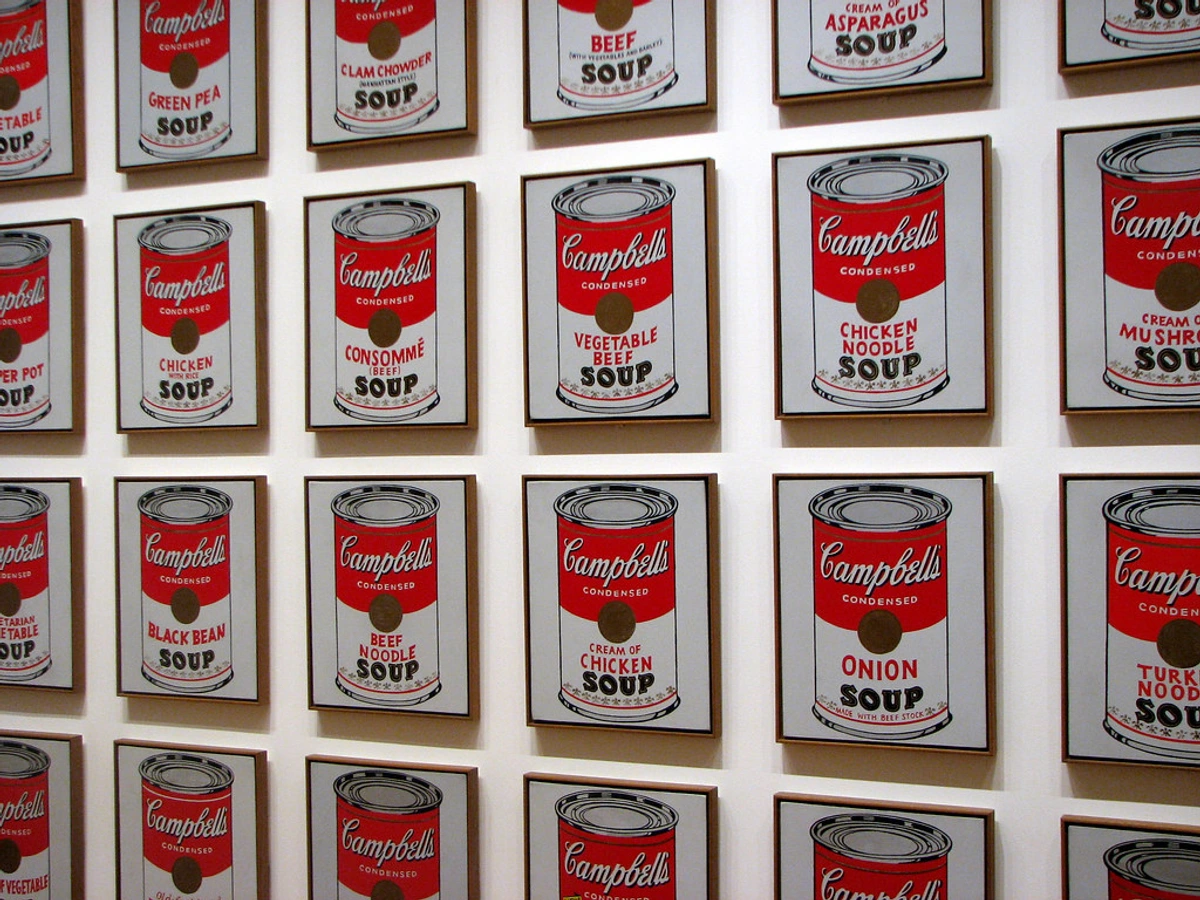
Alternatively, consider food photography that elevates everyday ingredients into works of art – a macro shot of a single herb leaf, or a beautifully composed spread of seasonal produce. It's about finding beauty in the familiar. You could also explore global culinary art, like intricate patterns from Moroccan tagines or vibrant Mexican papel picado, to bring a worldly flair. Or, for a truly quirky touch, vintage food advertisements can evoke nostalgia and charm, turning everyday products into pop art. I once saw a collection of framed vintage spice labels in a rustic kitchen, and it was absolutely delightful – a perfect blend of history, charm, and direct relevance to the space. Don't shy away from pieces that celebrate coffee, wine, or craft beer culture, reflecting other facets of your culinary passions. I once saw a collection of framed vintage spice labels in a rustic kitchen, and it was absolutely delightful – a perfect blend of history, charm, and direct relevance to the space. Don't shy away from pieces that celebrate coffee, wine, or craft beer culture, reflecting other facets of your culinary passions. You could even lean into vintage food advertisements for a nostalgic, quirky touch, or consider a piece like Andy Warhol's Campbell's Soup Cans artwork featuring multiple varieties of soup cans.
Alternatively, consider food photography that elevates everyday ingredients into works of art – a macro shot of a single herb leaf, or a beautifully composed spread of seasonal produce. It's about finding beauty in the familiar. You could also explore global culinary art, like intricate patterns from Moroccan tagines or vibrant Mexican papel picado, to bring a worldly flair. Or, for a truly quirky touch, vintage food advertisements can evoke nostalgia and charm, turning everyday products into pop art.
- Abstract Art: This is often my personal go-to, as you might know if you've explored my collection. Abstract art is incredibly versatile and powerful in a kitchen setting. It can introduce vibrant color, captivating texture, and dynamic energy without being tied to a literal subject, making it immune to 'dating' or becoming cliché. A bold, colorful abstract piece can become the undisputed focal point, creating a dynamic and inspiring contrast to perhaps more utilitarian kitchen elements. It’s a fantastic way to elevate the space from merely functional to truly inspiring, adding depth and a sense of thoughtful design. You can learn more about how abstract art fits into different styles in articles like decorating-with-abstract-art-in-bohemian-chic-interiors-a-guide-to-layering-and-texture or decorating-with-art-in-industrial-interiors. For a deeper dive into understanding abstract expression, check out the-ultimate-guide-to-abstract-art-movements-from-early-pioneers-to-contemporary-trends. My own philosophy often revolves around the idea that abstract art allows for a deeply personal interpretation, making it perfect for a space as intimate as the kitchen. It’s also incredibly forgiving, as its non-representational nature means it won’t clash with changing culinary trends or evolving tastes, making it a timeless choice. Don't be afraid to choose a piece with unexpected textures, perhaps like those discussed in the-definitive-guide-to-mixed-media-in-abstract-art-techniques-materials-and-contemporary-masters, to add another layer of intrigue. The beauty of abstract art is its ability to adapt and transform, making it a truly timeless choice for any kitchen. From bold geometric abstracts that echo clean lines to fluid, organic forms that bring a sense of movement, there's an abstract style for every kitchen. Abstract expressionism, with its raw emotion and energetic brushstrokes, can infuse a dynamic charge, while minimalist abstracts can offer a serene, contemplative balance. Consider how color fields can evoke deep moods, or how layered textures, perhaps like those discussed in exploring-texture:-my-favorite-techniques-for-adding-depth-to-abstract-paintings, can add intriguing depth. The beauty of abstract art lies in its ability to be both visually stimulating and deeply personal, allowing the viewer to bring their own interpretations and emotions to the piece, making it a perfect fit for a space where so much personal creation happens. This genre truly allows for the emotional and energetic landscape of your kitchen to be defined, fostering a sense of constant inspiration.
- Landscapes & Nature: A serene, expansive landscape or a vibrant botanical print can offer a wonderfully calming escape, especially if your kitchen tends to get a bit chaotic or feels enclosed. It's like bringing a little bit of the outside in, which I find incredibly refreshing and grounding. Think lush forest scenes, peaceful coastal views, or detailed botanical illustrations of herbs or flowers. These themes create a sense of tranquility and connection to the natural world, fostering a more relaxed cooking or dining experience. Even an abstract interpretation of nature can evoke this feeling, using organic shapes and earthy tones. Consider also pieces that feature natural textures, like a print of a geode slice or a close-up of tree bark, to bring an organic touch without being overtly pictorial. For a more subtle natural touch, a series of minimalist line drawings of plants can add sophistication without overwhelming the space. Beyond traditional landscapes, consider abstract interpretations of natural elements – the swirling patterns of water, the rugged textures of mountains, or the delicate veins of a leaf – which can bring nature's tranquility without being overtly literal. These pieces can evoke a sense of calm and escape, providing a soothing backdrop to your culinary endeavors, or a vibrant burst of color inspired by a blooming garden. I've seen kitchens transformed by a large-scale abstract print that subtly evokes a serene forest or a crashing wave, creating a powerful sense of connection to the outdoors. It's about creating a visual window to nature, even in the heart of the city.
- Eclectic Mix: Don't be afraid to mix and match! This is where your personal flair truly shines. A quirky vintage sign next to a sleek contemporary print, a small ceramic sculpture nestled among your cookbooks, or even a series of abstract pieces in varied styles can create a truly personal, lived-in feel. The trick to a successful eclectic kitchen art display is finding a subtle unifying element – perhaps a consistent color palette that subtly threads through different pieces, a similar framing style, or a recurring motif. It's about intentional chaos, a curated collection that tells a rich, multifaceted story. I'm all for expressing your unique story through a thoughtfully curated blend of art! Just make sure that each piece, despite its individual charm, can withstand the kitchen environment or is properly protected. Don't be afraid to mix vintage finds with modern prints, or a quirky sculpture with abstract photography. The most captivating eclectic spaces are those that tell a truly unique story, reflecting the homeowner's diverse interests and travels. The key is to trust your aesthetic instincts and let your personality shine through, even if it means bending some conventional 'rules'. After all, your home is an extension of yourself, and your kitchen, as its heart, deserves to be as unique and inspiring as you are. For more inspiration on embracing diverse styles, explore decorating-with-abstract-art-in-eclectic-interiors. The trick to a successful eclectic kitchen art display is finding a subtle unifying element – perhaps a consistent color palette that subtly threads through different pieces, a similar framing style, or a recurring motif. It's about intentional chaos, a curated collection that tells a rich, multifaceted story. I'm all for expressing your unique story through a thoughtfully curated blend of art! Just make sure that each piece, despite its individual charm, can withstand the kitchen environment or is properly protected. Don't be afraid to mix vintage finds with modern prints, or a quirky sculpture with abstract photography. The most captivating eclectic spaces are those that tell a truly unique story.
- Urban & Industrial Art: If your kitchen leans towards a modern, minimalist, or industrial aesthetic, art inspired by urban landscapes, graphic elements, or even abstract interpretations of machinery can be incredibly striking. Think gritty street art prints, architectural blueprints reimagined, or bold geometric abstracts that echo the clean lines of stainless steel appliances. This theme brings a sophisticated, edgy vibe, transforming the kitchen into a cutting-edge design statement. Articles like decorating-with-art-in-industrial-interiors can offer more ideas for this look. Think bold black and white photography of cityscapes, or abstract pieces that mimic the raw textures of concrete and steel. This theme can feel incredibly sophisticated and modern, particularly in loft-style or open-plan kitchens. Gritty street art prints, architectural blueprints reimagined, or bold geometric abstracts that echo the clean lines of stainless steel appliances can create a sophisticated, edgy vibe, transforming the kitchen into a cutting-edge design statement. I find this style particularly effective in kitchens with exposed brick, concrete floors, or minimalist cabinetry, where the art can amplify the existing architectural features, creating a cohesive and compelling visual narrative. For a truly bold statement, consider a graphic print that subtly references architectural elements or city grids.
- Personal & Family Art: Don't underestimate the power of truly personal pieces! Children's artwork (framed and protected, of course!), family photos (perhaps digitally enhanced and printed on metal), or even a piece you created yourself can bring an irreplaceable warmth and personal narrative to your kitchen. These are the pieces that truly make a house a home, and when given the proper protection, they can thrive in this central space. It’s about celebrating your own story. For instance, a beautifully framed and protected digital print of a child's vibrant drawing can be a priceless addition, bringing immediate warmth and personality. Or, consider custom portraits of beloved pets, rendered in a style that complements your kitchen's aesthetic. These are the pieces that truly make a space feel like yours, imbued with memories and personal significance that no mass-produced decor can replicate. I find that these pieces, more than any others, invite genuine connection and storytelling. You could even frame a cherished family recipe, perhaps hand-written by a grandparent, transforming it into a piece of functional nostalgia. It's about celebrating your own story, your own people, in the heart of your home. Consider digitally enhancing old family photos before printing them on metal or acrylic for a modern, durable twist on nostalgia. You could also create a photographic collage of culinary adventures or travel memories, sealing them behind glass for protection. Black and white photography can add a timeless, sophisticated touch, while vibrant macro shots of fruits or vegetables can bring a fresh, contemporary feel. The emotional connection to these pieces is invaluable, making your kitchen a truly heartfelt space. It’s a wonderful way to constantly remind yourself of what truly matters, infusing every meal with a sense of love and history. For a truly personal touch, consider having a professional artist transform a cherished family photo into a painting or illustration, then have it printed on a durable material for kitchen display.
- Cultural & Travel Inspired Art: Bring the world into your kitchen! Pieces that evoke a favorite travel memory – a vibrant cityscape, a rustic Tuscan village scene, or intricate patterns from an exotic market – can add a rich layer of storytelling and personal history. Think about vibrant, colorful street art prints from Lisbon, or beautiful abstract interpretations of global patterns. It's a fantastic conversation starter and a constant source of inspiration for new recipes! You might find inspiration in articles like an-art-lovers-guide-to-lisbon or an-art-lovers-guide-to-sao-paulo for how urban art can enliven a space. Imagine a vibrant print of a bustling market scene from a favorite vacation, or an abstract piece inspired by the colors of a sunset over the Mediterranean – these pieces transport you and infuse your kitchen with a sense of adventure. You could even display a collection of small, framed maps or travel posters, creating a mini gallery that celebrates your wanderlust. It’s a wonderful way to keep your adventurous spirit alive, even on a Tuesday evening while doing dishes! I’ve seen clients incorporate everything from framed maps of their favorite wine regions to abstract pieces inspired by traditional Japanese textiles, each telling a story of their worldly passions. Consider intricate patterns from Moroccan tiles, or the bold colors of Mexican folk art, adapted onto durable mediums. These pieces serve as fantastic conversation starters and a constant source of inspiration for new culinary explorations, keeping your travel dreams alive and vibrant. It's about letting your kitchen be a passport to different cultures and experiences.
- Typography & Quotes: Sometimes, words themselves are the art. A beautifully rendered quote about food, family, or happiness can be a powerful and inspiring addition to your kitchen. From sleek minimalist typography to vintage-inspired signage, these pieces can inject humor, warmth, or a daily dose of motivation. Just ensure the message truly resonates with you and your home's ethos – and perhaps choose a quote that encourages healthy eating or joyful cooking! Custom-made signs with your family name or a favorite recipe title can also add a unique, personalized touch. Beyond inspirational quotes, consider artful typography displaying common kitchen terms in a playful font, or even a framed menu from a memorable meal. The possibilities are truly endless for injecting personality through words. Just remember to choose fonts and styles that are legible and complement your kitchen's overall aesthetic. From sleek minimalist typography to vintage-inspired signage, these pieces can inject humor, warmth, or a daily dose of motivation. Custom-made signs with your family name or a favorite recipe title can also add a unique, personalized touch. Beyond inspirational quotes, consider artful typography displaying common kitchen terms in a playful font, or even a framed menu from a memorable meal. A series of small, framed words or phrases can create a delightful gallery wall, subtly conveying a message or a mood. These textual art pieces offer a direct way to communicate a feeling or a message, making your kitchen not just beautiful, but also thought-provoking and engaging. Think about using different fonts and sizes for each word to create visual interest, or choosing metallic lettering on a simple background to add a touch of modern elegance. It's a surprisingly versatile way to inject personality and a clear message into your kitchen, turning words into tangible inspiration.
Color Play:
Color is probably the most powerful tool in your decorating arsenal. It's the silent language of your kitchen, setting the mood before anyone even takes a bite. Do you want your art to:
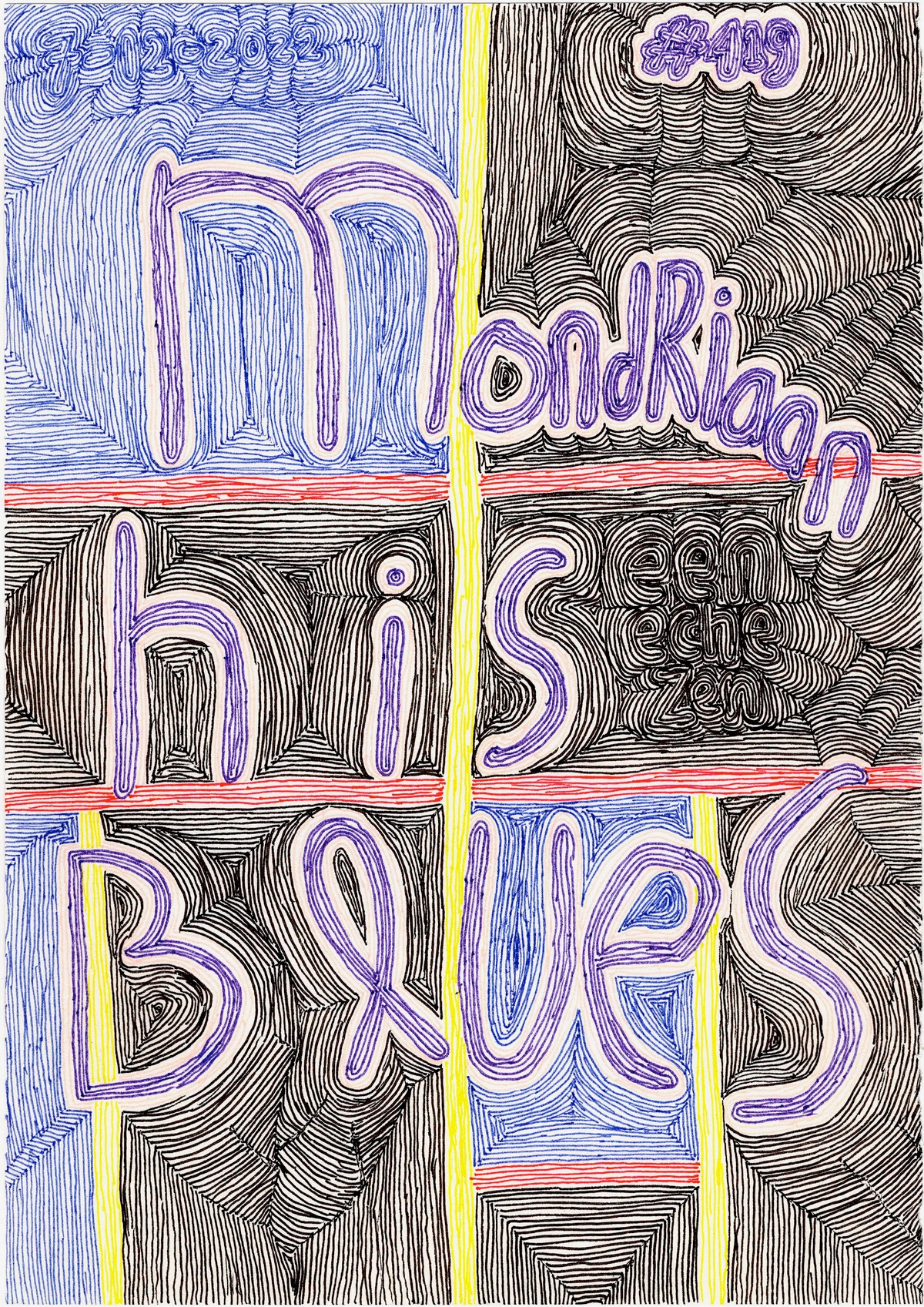
- Harmonize: The simplest way to integrate art is to pick colors that are already present in your kitchen – perhaps subtly matching your cabinet hardware, an accent wall, the undertones in your countertop material, or even your favorite set of dishes. This creates a cohesive, polished, and effortlessly sophisticated look. It's about blending the art seamlessly into the existing aesthetic, making it feel like it was always meant to be there. Understanding basic color harmony principles, as discussed in articles like how-artists-use-color, can be incredibly helpful here. This approach offers a subtle elegance, creating a kitchen that feels effortlessly curated and calm. For example, if your kitchen has warm wood tones, art with earthy greens and soft yellows can create a wonderfully inviting atmosphere. This approach creates a sense of effortless sophistication, where every element feels intentionally placed and contributes to a serene, beautiful whole. It’s about creating a subtle visual dialogue between your art and its surroundings. Think of it as painting with a limited, refined palette, where each color choice is deliberate and contributes to the overall tranquility of the space. Consider an abstract piece from my collection that features analogous colors to your existing decor, creating a serene flow.
- Contrast: Be bold! Sometimes, the most striking art is one that deliberately contrasts with its surroundings. A vibrant piece of art in a predominantly neutral kitchen can be an incredible statement, acting as an instant focal point. Imagine a punchy yellow, a deep turquoise, or a fiery red abstract piece against a backdrop of pristine white cabinets or muted grey walls. This adds immediate energy, personality, and can even define a specific zone within an open-plan kitchen. Don't be afraid to make your art sing a different tune from the rest of the room – that's often where the magic happens! For more on the impact of color, explore the-psychology-of-color-in-abstract-art-beyond-basic-hues. I often recommend introducing a vibrant, contrasting color through art in an otherwise monochromatic kitchen to prevent it from feeling sterile. It’s like a visual wake-up call, adding unexpected depth and a focal point that instantly commands attention. This creates a dynamic, often invigorating, visual tension that can make the kitchen feel incredibly alive. I particularly love how a vibrant abstract, like one of my colorful pieces, can breathe life into an otherwise monochrome space. This deliberate juxtaposition creates a captivating focal point, ensuring your kitchen never feels mundane and always sparks visual interest. It's a bold move, but one that consistently pays off in terms of visual dynamism and personality. For example, a punchy yellow or a fiery red abstract piece can instantly energize a kitchen with pristine white cabinets and cool grey walls. Consider complementary colors for a high-impact contrast – blues against oranges, or purples against yellows – to create a vibrant focal point. This deliberate juxtaposition creates a captivating visual tension that can make the kitchen feel incredibly alive, transforming it from merely functional to a true design statement.
- Create Energy: Colors have an undeniable psychological impact, and this is particularly potent in the kitchen. Warm colors (think reds, oranges, yellows, and vibrant pinks) are known to stimulate appetite, conversation, and a sense of warmth – absolutely perfect for a lively, social kitchen! Cool colors (blues, greens, purples) can bring a sense of calm, freshness, and serenity, ideal for creating a more tranquil cooking environment. Always think about the mood you want to evoke. My own abstract art often plays with vibrant, energetic colors to bring that very dynamism into a room, making it feel alive and inspiring. Consider a bold mix of warm and cool tones for a truly electrifying effect, or a monochromatic scheme with pops of an unexpected hue for sophisticated energy. For example, a crisp blue abstract piece can make a small kitchen feel more expansive and airy, while a fiery red can make it feel more intimate and passionate. Think about the subtle psychological effects: vibrant yellows can evoke joy and optimism, while deep greens can bring a sense of renewal and nature. It’s all about intentionally crafting the emotional landscape of your kitchen through the power of color, creating a space that not only looks good but feels good to be in. A dynamic abstract with energetic reds and oranges can infuse a sense of passion and warmth, perfect for a kitchen that's a hub of activity and lively conversation. Conversely, soft blues and grays can create a calming, almost meditative atmosphere, ideal for a quiet morning coffee ritual or methodical baking. By understanding these nuances, you can truly 'paint' the mood of your kitchen, turning it into a bespoke sensory experience.
Placement, Placement, Placement: Where Does Art Go in a Kitchen?
This is where many people get stuck. “But where do I put it?” they ask. My answer is almost always: everywhere! The kitchen offers surprisingly diverse opportunities for art display. Just remember the practicalities we discussed earlier – keep delicate pieces away from direct heat and water sources. It’s about smart strategy and understanding the flow of your unique kitchen space. The right placement can transform a piece from merely 'there' to truly captivating, making it an integral part of your kitchen's narrative.
Beyond the Walls: Unexpected Surfaces
Who says art only belongs on the wall? In a kitchen, every surface is a potential canvas! Thinking creatively about where to display art can unlock surprising opportunities to infuse personality and charm into your culinary domain. I mean, why limit yourself to traditional wall space when there's so much creative potential in every nook and cranny? It's about seeing your kitchen with fresh, artistic eyes.
- Appliance Fronts: For a truly dynamic and easily changeable display, consider using high-quality, kitchen-safe magnets to display smaller prints, postcards, or even children's artwork directly on the front of your refrigerator or dishwasher. This is a fantastic way to add rotating bursts of color and personal touches without any permanent commitment. Imagine showcasing a collection of vintage postcards, your favorite recipe cards, or even small, vibrant abstract magnet prints that you can easily swap out to match the seasons or your mood. It's an instant gallery that's endlessly flexible.
- Windowsills & Ledges: These often-underestimated spots are perfect for propping up small framed pieces, miniature sculptures, or even beautiful artisan ceramic bowls. The natural light will illuminate these pieces beautifully, and they can be easily moved for cleaning or seasonal refreshes. Just ensure they are stable and not in a high-traffic zone where they might be easily knocked over. I often secure smaller, lighter items with a bit of museum putty to prevent accidental tumbles, especially if they're near a frequently opened window or a bustling pathway. Safety first, even for art!
- Magnetic Knife Strips (Decorative): Beyond their practical use, some magnetic knife strips are sleek enough to hold small, lightweight metal prints or even beautifully designed magnetic bottle openers that double as miniature art pieces. It's a subtle integration of utility and aesthetics.
- Tray Displays: Group a few smaller, durable art pieces on a decorative tray on your countertop or kitchen island. This creates a curated vignette that can be easily moved for cleaning or rearranged to refresh the look. Mix in practical items like a beautiful olive oil cruet or a unique salt cellar for a truly lived-in, artistic feel. I've often used this technique to introduce seasonal elements, swapping out a vibrant summer print for something cozier and more muted in the colder months. This layering approach creates visual depth and richness, making your countertop not just a workspace but a curated tableau, reflecting your taste and adding a touch of sophisticated charm.
- Above Cabinets: That often-neglected space above your upper cabinets is an absolute prime spot for a horizontal statement piece of art or a thoughtfully arranged collection of smaller items. It naturally draws the eye upwards, making the ceiling feel higher and the entire room more expansive. This area is typically out of the direct splash zone, making it ideal for larger, less vulnerable pieces that can truly command attention. Just ensure the scale feels balanced – you don't want a tiny postage stamp lost in a vast space, nor a piece that's crammed too tightly. Consider lighting it from above for added drama, perhaps with discreet LED strips or small spotlights. This is also a great spot for art that you don't want to be constantly wiping down, as it's typically out of the direct splash zone. I often use this space for oversized abstract prints that can really command attention without being too literal. The key is to avoid clutter and let the chosen piece or collection breathe, creating a sophisticated visual break in the kitchen's architecture. Just ensure the art is securely fastened, especially if your kitchen experiences vibrations from heavy appliance use. Consider using discreet LED strip lighting or small spotlights above the cabinets to illuminate the artwork, creating added drama and drawing the eye upwards. This area is perfect for larger, horizontal abstract pieces or a carefully curated collection of uniform prints that can make a powerful, cohesive statement from a distance. Just ensure you clean this area regularly, as dust can accumulate up there – a small price to pay for such a dramatic display!
- Breakfast Nooks & Dining Areas: If your kitchen design includes a dedicated breakfast nook or an integrated dining space, treat it with the same artistic reverence you would a mini dining room. A significant, thoughtfully chosen piece of art can define this area beautifully, setting its mood and purpose. For a breakfast nook, something light, airy, or food-themed can be wonderful, while a dining area might call for something more dramatic or conversational. I've covered choosing art for a dining room in more detail in choosing-art-for-your-living-room (many principles apply!), and many of those ideas for creating atmosphere and focal points apply perfectly here. Think about a piece that encourages linger, whether through its serene palette or intriguing composition. A framed abstract print with warm, inviting colors, for instance, can make a breakfast nook feel incredibly cozy and inviting. This area is also perfect for pieces that tell a personal story, perhaps a framed travel photograph from a memorable trip or a piece of art collected during a family vacation. Think about a piece that encourages linger, whether through its serene palette or intriguing composition. A framed abstract print with warm, inviting colors, for instance, can make a breakfast nook feel incredibly cozy and inviting. This area is ideal for art that contributes to a relaxed dining experience, perhaps a vibrant still life or a calming landscape. For a more formal dining area integrated into the kitchen, a dramatic statement piece can anchor the space, setting a sophisticated tone for entertaining. I particularly love how a large, abstract canvas with a harmonious color palette can unify an open kitchen-dining area, making both spaces feel more expansive and thoughtfully connected.
- Empty Wall Spaces: Obvious, right? But sometimes we overlook that small sliver of wall between a window and a cabinet, or that awkward, often-forgotten corner. These are perfect opportunities for a single, impactful piece of art, or even a meticulously curated small gallery wall. Don't be afraid to experiment with different sizes and orientations to find what feels right. Remember, even a small piece in the right spot can make a huge statement. For ideas on arranging multiple pieces, check out curating-a-gallery-wall-with-abstract-art:-tips-for-a-dynamic-display. Don't forget about incorporating negative space around the art – sometimes the blank areas are just as important as the art itself for visual balance. Even a narrow vertical abstract can make a small wall feel taller and more purposeful. Don't overlook the potential of a small, impactful piece in an unexpected spot, like a narrow sliver of wall next to a pantry door, creating a delightful moment of discovery. I often find that these unexpected artistic 'surprises' are what make a kitchen truly unique and memorable, adding layers of charm and personality that are discovered over time. For ideas on arranging multiple pieces, check out curating-a-gallery-wall-with-abstract-art:-tips-for-a-dynamic-display. Don't forget about incorporating negative space around the art – sometimes the blank areas are just as important as the art itself for visual balance. Even a narrow vertical abstract can make a small wall feel taller and more purposeful. For particularly challenging corners or awkward nooks, a small, vibrant piece can transform an overlooked space into a charming focal point, drawing the eye and adding unexpected personality.
- Open Shelving & Ledges: If your kitchen boasts open shelving or generous ledges, these are fantastic stages for integrating smaller framed pieces, miniature ceramic sculptures, decorative plates, or even beautiful abstract objects among your cookbooks and dishes. This creates a curated, layered, and delightfully lived-in feel, breaking up the visual monotony of purely functional items. Just remember to keep them stable and easily movable for cleaning – nothing ruins the vibe like a teetering sculpture! I love to use open shelves to create small, rotating vignettes, mixing practical items with small, cherished artworks. This allows for seasonal refreshes without a major rehang. Consider grouping objects by color or texture to create a cohesive display, even with disparate items. I love mixing small, durable abstract sculptures with cookbooks and unique ceramic bowls, creating a dynamic still life that evolves with my moods or the seasons. This approach turns everyday objects into elements of a larger artistic composition, making your kitchen feel constantly curated and alive. I love to use open shelves to create small, rotating vignettes, mixing practical items with small, cherished artworks. This allows for seasonal refreshes without a major rehang. Consider grouping objects by color or texture to create a cohesive display, even with disparate items. I love mixing small, durable abstract sculptures with cookbooks and unique ceramic bowls, creating a dynamic still life that evolves with my moods or the seasons. For an even more integrated look, consider using decorative plates or small, framed botanicals that complement your kitchen's color scheme. The key is to create curated vignettes that feel both artistic and lived-in, avoiding clutter while maximizing visual appeal. This allows for constant experimentation and refreshing your decor without committing to permanent changes.
- By the Window: A small, weather-resistant piece of art, or even a vibrant stained-glass panel, can catch the natural light beautifully and add a truly unexpected, often magical, touch to your kitchen. Think about how light changes throughout the day, transforming the piece and its surroundings. Just ensure the art can withstand direct sunlight without fading, or opt for materials like glass or ceramic that thrive in such conditions. You might also consider art that offers a degree of privacy while still letting light in, like a beautifully frosted or textured glass panel. A minimalist abstract piece on tempered glass can offer both aesthetic appeal and a degree of privacy without sacrificing light. Imagine a delicate stained-glass suncatcher casting colorful patterns on your kitchen walls, or a transparent acrylic panel featuring a subtle abstract design, allowing light to filter through beautifully. This creates an ever-changing art display, as the light shifts throughout the day, transforming the mood and colors of your kitchen in subtle, delightful ways. The interplay of light and art in a window setting can truly be magical, transforming the mood of the room throughout the day. A small, weather-resistant piece of art, or even a vibrant stained-glass panel, can catch the natural light beautifully and add a truly unexpected, often magical, touch to your kitchen. Just ensure the art can withstand direct sunlight without fading, or opt for materials like glass or ceramic that thrive in such conditions. You might also consider art that offers a degree of privacy while still letting light in, like a beautifully frosted or textured glass panel. A minimalist abstract piece on tempered glass can offer both aesthetic appeal and a degree of privacy without sacrificing light. Imagine a delicate stained-glass suncatcher casting colorful patterns on your kitchen walls, or a transparent acrylic panel featuring a subtle abstract design, allowing light to filter through beautifully.
- Side of an Island: If your kitchen island has an exposed side, especially one with a little depth, consider a flush-mounted piece of art. This is a subtle yet incredibly impactful way to add interest and inject personality into what might otherwise be a blank surface. Durable metal or acrylic prints work wonderfully here. It's a fantastic opportunity to tie the island into the overall aesthetic of your kitchen, turning a functional block into a design statement. If your island has seating, consider a piece that can be enjoyed from that vantage point, adding a surprising layer of visual interest to an often-overlooked area. For a truly bold statement, a large-scale abstract could turn your island into a central art installation. This is an often-overlooked area with immense potential, allowing you to infuse artistic flair into the very heart of your kitchen's workflow. If your kitchen island has an exposed side, especially one with a little depth, consider a flush-mounted piece of art. This is a subtle yet incredibly impactful way to add interest and inject personality into what might otherwise be a blank surface. Durable metal or acrylic prints work wonderfully here. It's a fantastic opportunity to tie the island into the overall aesthetic of your kitchen, turning a functional block into a design statement. If your island has seating, consider a piece that can be enjoyed from that vantage point, adding a surprising layer of visual interest to an often-overlooked area. For a truly bold statement, a large-scale abstract could turn your island into a central art installation. If children frequently use the island, opt for shatter-proof materials and secure mounting. This area is also fantastic for introducing a playful or unexpected piece, given its central, often social, role in the kitchen.

- Inside Pantry Doors or Cabinet Interiors: Don't overlook the hidden spaces! A small, uplifting print, a quirky piece of typography, or even children's artwork inside a pantry door or cabinet can be a delightful, unexpected surprise every time you open it. It's a personal touch that doesn't need to withstand the elements, making it ideal for more delicate paper prints or meaningful mementos. It's a little secret joy, just for you! I once saw a tiny, intricate abstract piece tucked inside a spice cabinet – it was such a delightful, unexpected discovery, and perfectly encapsulated the homeowner's quirky personality. These hidden gems are like little secrets, offering a private moment of beauty and personal reflection every time you open a door. It's a subtle wink to your personal style, a little unexpected moment of joy. A small, uplifting print, a quirky piece of typography, or even children's artwork inside a pantry door or cabinet can be a delightful, unexpected surprise every time you open it. It's a personal touch that doesn't need to withstand the elements, making it ideal for more delicate paper prints or meaningful mementos. You could also use these hidden spaces for mood boards, rotating personal photos, or collecting small art pieces that don't quite fit elsewhere but still bring you happiness. It's a private moment of beauty, just for you. These little 'art secrets' are a wonderful way to infuse your kitchen with personal anecdotes and visual delights that are truly intimate and cherished.
Here's a breakdown of placement ideas:
Placement Area | Ideal Art Types | Considerations |
|---|---|---|
| Placement Area | Ideal Art Types | Considerations |
| :------------------------ | :--------------------------------------------------------------- | :--------------------------------------------------------------------------- |
| Appliance Fronts | Small prints, postcards, children's art, magnets | Easily changeable, no wall damage, low commitment, personal touch |
| Windowsills & Ledges | Small framed pieces, miniature sculptures, artisan bowls | Natural light illumination, easy to move, requires stability, out of high traffic |
| Magnetic Knife Strips | Small metal prints, decorative magnets | Subtle integration, utility meets aesthetics, lightweight pieces |
| Tray Displays | Grouped durable art, mixed with functional items | Curated vignette, easily movable, seasonal refresh, layered look |
| Above Cabinets | Large horizontal pieces, grouped smaller items, abstract art | Less direct heat/moisture exposure, consider dust accumulation, scale is key |
| Breakfast Nook/Dining | Statement piece, gallery wall, calming themes, food/drink art | Treat as a mini dining area, consider mood, avoid direct food splatter |
| Empty Wall Spaces | Any size, focal point, gallery wall, mixed media | Ensure accessibility for cleaning, avoid direct splash, use templates for sizing |
| Open Shelving/Ledges | Small framed art, ceramic sculptures, decorative plates, botanicals | Stable placement, easy to move for cleaning, balance with functional items |
| Island Side | Flush-mounted art, durable materials, abstract patterns | Subtle impact, consider viewing angle from seating areas, high traffic |
| Near Window | Weather-resistant, light-catching pieces, glass art | Direct sunlight can fade some art over time (UV protection!), light interaction |
| Inside Pantry/Cabinet | Delicate paper prints, personal photos, small quotes | Hidden gem, no environmental concerns, easy to change, private enjoyment |
The Role of Lighting in Kitchen Art Display
I often find that people overlook how much lighting can utterly transform a piece of art, especially in a functional, often brightly lit space like the kitchen. Good lighting isn't just for basic visibility; it's about enhancing the mood, bringing out the nuances of color and texture, and truly making your chosen artwork sing. It's the silent director of your visual symphony, influencing how every brushstroke and color choice is perceived. You can learn more about this in definitive-guide-to-understanding-light-in-art. After all, a masterfully lit artwork can change the entire dynamic of a room, transforming a static object into a vibrant, living presence.
Beyond Practicality: The Art of Illumination
Beyond merely seeing the art, intentional lighting elevates it, making it an integral part of your kitchen's ambiance and a dynamic element in itself. It's about 'painting with light' to enhance texture, color, and mood, transforming a static image into a vibrant, dynamic focal point, especially with my own abstract work where color and texture are key. It’s not just about seeing the art, but experiencing it in its best possible light, allowing it to truly become a conversation piece and a source of constant visual delight.
- Ambient Light: Your general kitchen lighting (overhead fixtures, under-cabinet task lights) sets the stage. Ensure it's not creating harsh shadows or distracting glares on your art. Sometimes, a warmer light temperature can make certain colors pop, especially in abstract pieces, or enhance the cozy feel of a still life. Consider dimmable options to seamlessly adjust the mood from bright morning prep to cozy evening dining. Smart lighting systems can be integrated to subtly shift color temperature and brightness, harmonizing with your art and the time of day. For optimal viewing, aim for an even distribution of ambient light that minimizes glare on reflective surfaces. This creates a comfortable, welcoming atmosphere where both your culinary creations and your chosen artworks can shine, literally and figuratively. Remember, the goal is not to flood the space with light, but to create a balanced illumination that enhances the art without overpowering it or causing uncomfortable glare. A well-lit kitchen, beyond its functional purpose, becomes a stage for your art.
- Accent Lighting: This is where your art truly shines. Small spotlights (track lighting, recessed lights, or dedicated picture lights) can be strategically aimed to highlight a specific piece, drawing the eye and adding a layer of sophistication. For metal or acrylic prints, carefully positioned lighting can dramatically enhance their reflective qualities and inherent vibrancy. Just be mindful of heat from incandescent bulbs if they're close to the art, and consider cool-LED options for longevity and safety. Experiment with different beam angles to highlight specific textures or colors, creating a dynamic interplay of light and shadow. You can dive deeper into choosing the right lighting in how-to-choose-the-right-lighting-to-enhance-your-abstract-art-collection to truly make your pieces pop. Experimentation is key here; a slight angle adjustment of a spotlight can completely change the perception of a textured piece. This focused illumination is what transforms art from mere decoration into a curated exhibit.
- Natural Light: Embrace it! As we discussed with placement, windows can offer beautiful, ever-changing natural light that interacts dynamically with your art. However, it's crucial to be aware of direct, intense sunlight, which can be surprisingly damaging, fading unprotected art over time. Think of how a piece changes throughout the day with the shifting natural light – it's a dynamic experience, constantly offering a fresh perspective! Strategic placement can minimize glare while maximizing the beautiful, soft illumination that natural light provides, truly bringing your art to life. I find there’s nothing quite like natural light to reveal the subtle nuances and textures in an abstract piece, making it feel alive and ever-changing. It’s a free, constantly evolving light show for your kitchen art.
For a deeper dive into making your art truly stand out through smart illumination, I've written extensively on the-art-of-display:-how-to-light-and-position-abstract-art-for-maximum-impact. Smart lighting can truly be a game-changer, turning a flat image into a vibrant, dynamic focal point, and it's particularly effective with my own abstract work where color and texture are key. Think of it as another layer of artistic expression, painting with light. The right lighting can make your kitchen art feel like it's glowing from within, creating a truly mesmerizing effect. It's about revealing the hidden depths and subtleties that might otherwise be overlooked.

My Personal Approach: Trusting Your Gut (and a Little Logic)
Choosing art is deeply personal. I always tell people to go with what they genuinely love, what sparks joy, what makes them pause and feel something. That said, a little logic goes a long way, especially in a kitchen. It's about blending intuition with practicality – something I strive for in my own abstract works. After all, the most beautiful things in life often require a thoughtful balance of heart and mind.
The Three Pillars of Kitchen Art: Love, Logic, and Longevity
My personal approach to selecting kitchen art hinges on what I call the three 'L's': Love, Logic, and Longevity. First, Love – choose pieces that genuinely resonate with you, that spark joy or contemplation, that speak to your soul. If you don't love it, it won't feel right; it will simply be a decoration, not an inspiration. Second, Logic – this is where the practicalities we've discussed come in. Consider the material, placement, and environmental factors. Does it make sense for a kitchen? Is it durable, cleanable, and safely installed? And third, Longevity – aim for pieces that will endure, both physically and aesthetically. Invest in quality and protection, and choose art that you believe will stand the test of time, becoming a cherished part of your home's story, not a fleeting trend. It’s about making art choices that serve you now and for many years to come, truly becoming an heirloom.
- Scale and Proportion: This is absolutely huge, perhaps one of the most critical elements in art placement. A tiny postage stamp of art on a vast, empty kitchen wall will look utterly lost, lacking impact. Conversely, a massive, imposing piece crammed into a cramped nook will feel overwhelming and claustrophobic. My advice? Step back, take a picture of the wall, and consider if the art feels 'right' for the space. A fantastic trick is to cut out paper templates the size of your potential artwork and tape them to the wall to visualize before you commit. For example, if you're thinking about a piece for a larger wall, I'd suggest something bold and perhaps abstract to really command attention without demanding too much specific interpretation. If you're working with a smaller space, abstract-art-for-small-spaces:-maximizing-impact-in-compact-areas offers some brilliant strategies. Remember, the goal is visual harmony, not just filling space. Even a collection of smaller pieces can work if their combined mass is proportional to the wall. For example, a single, dominant abstract piece can anchor a large wall, while a carefully arranged grid of smaller, complementary prints can bring energy to a more confined area. It's about ensuring the art doesn't feel like an afterthought, but rather an integral part of the room's design. Remember, a sense of intention is paramount. Even if you're not a professional designer, trust your eye – if it feels unbalanced, it probably is. It's about creating a harmonious visual dialogue within your kitchen, ensuring every piece has its purpose and place.
- Start Small, Experiment: Don't feel pressured to deck out your entire kitchen at once, as if you're staging a museum exhibit! Start with one or two pieces that you genuinely love, that truly resonate with you. Live with them for a bit, maybe a few weeks or even months. See how they make the space feel, how they interact with the light at different times of day. You can always add more over time, or even swap things out seasonally. That's the beauty of art – it's dynamic, and your collection can evolve with your tastes and your kitchen's needs. Think of it as an ongoing conversation, not a one-time declaration. There's a wonderful freedom in knowing your kitchen art can evolve with your tastes, the seasons, or even just your mood, without the pressure of a permanent commitment. It's how I often build my own art collections – one thoughtful piece at a time. This iterative approach allows you to truly understand how different pieces interact with your space and lifestyle before making larger commitments. It’s like test-driving a car before you buy it – you need to feel how it handles in your own environment. This approach allows for true personalization and avoids costly mistakes.
- Layering: This is a fantastic trick I use everywhere, and it works wonders in a kitchen to add warmth and visual richness. Instead of hanging every single piece, try leaning a smaller framed piece against a larger one on an open shelf, or prop a durable print against a tile backsplash (ensuring it's secure!). This adds instant depth and visual interest without needing to put holes in your walls. You can even mix art with beautiful functional items like artisan cutting boards, unique ceramic bowls, or even small potted herbs, creating a curated still life that is both beautiful and practical. This layering adds instant depth and visual interest without needing to put holes in your walls, creating rich, visually interesting moments throughout your kitchen. The goal isn't just to hang things; it's to create rich, visually interesting moments throughout your kitchen. Imagine a beautifully textured abstract print leaning against the wall on a countertop, nestled amongst a stack of cookbooks and a unique ceramic vase – it’s a living still life, constantly inviting interaction. This technique transforms utilitarian surfaces into curated artistic displays, making your kitchen truly unique.

Frequently Asked Questions about Kitchen Art
What about art near a sink or dishwasher?
Art near a sink or dishwasher faces a constant barrage of water splashes, steam, and cleaning product aerosols. For these high-risk zones, prioritize materials that are explicitly waterproof and easy to wipe clean, such as metal prints, acrylic prints, or tempered glass panels. If you must display framed art, ensure it has a completely sealed backing, a durable, non-porous frame, and museum-grade acrylic glazing for shatter resistance and optimal protection. Positioning is crucial; even a few inches away can make a significant difference. Consider a small, robust piece that can be easily removed for deep cleaning or during heavy-duty dishwashing. I often recommend selecting art that's specifically designed for outdoor use in these areas, as they offer an even higher level of resilience against the elements. It's all about making smart, informed choices to safeguard your beautiful pieces from the inevitable realities of a working kitchen.
Can I put original paintings in a kitchen?
Yes, absolutely, but with significant caveats – and a dose of caution! I'd strongly advise against placing any original painting in areas prone to direct splatters, high heat, or extreme humidity (like right next to the stove, directly above the sink, or near a frequently used kettle). If you have an original, consider having it professionally varnished or protected under museum-grade glass with UV protection and a sealed frame. Acrylic and oil paintings are generally more durable and resilient to environmental changes than watercolors or pastels, but even they need protection. Always prioritize a safe, less exposed spot, perhaps in a breakfast nook or on a wall far from the direct action. Remember, preserving the art is key! I've seen some beautifully preserved family portraits, for example, displayed with care in a kitchen's least trafficked area. Ultimately, it’s a calculated risk, so weigh the sentimental or monetary value of the piece against the potential for damage. For invaluable or irreplaceable pieces, I'd almost always advise opting for a high-quality reproduction on a more durable, kitchen-friendly material, saving the original for a safer, more controlled environment. The goal is to admire the art, not constantly worry about its preservation.
What about a small kitchen?
Having a compact kitchen doesn't mean you have to sacrifice art! In fact, art can be incredibly effective in smaller spaces, making them feel larger, more intentional, and personalized. The key is thoughtful scale and strategic placement. Consider a single, impactful vertical piece to draw the eye upwards and create the illusion of height. Slim, flush-mounted metal or acrylic prints work wonderfully in narrow spots. Mirrored art pieces can also magically expand a small space by reflecting light and creating depth. Additionally, don't shy away from vibrant, bold colors in a small kitchen; a pop of unexpected color can make a space feel more energetic and intentional, rather than cramped. Don't be afraid to utilize unexpected spots like the inside of cabinet doors for smaller, delightful pieces. And remember, less is often more – a few carefully chosen pieces will have a greater impact than a cluttered display. You can find more targeted strategies in abstract-art-for-small-spaces:-maximizing-impact-in-compact-areas. It's about smart design, not just sheer square footage. Even a small piece of abstract art can create a powerful focal point, drawing the eye and adding a sense of depth and intrigue.
What about art in rental kitchens?
Ah, the perennial rental dilemma! This is where you get to be truly ingenious. Command strips (the good quality ones!) are your best friend for lighter, framed prints or canvas pieces, offering surprisingly strong hold without wall damage. Look into high-quality wall decals for impactful, temporary murals. Open shelving becomes even more crucial here for propping up smaller pieces without needing nails. And remember the 'hidden gems' – inside pantry doors or cabinet fronts – for personal touches that don't violate your lease agreement. Focus on lightweight, easily removable, and non-damaging options, and you can still create a wonderfully artistic kitchen, even in a rental. You'd be surprised how transformative a few well-placed, temporary pieces can be! And for a truly unique, low-commitment option, consider leaning a larger, durable piece against a wall on the floor in a less trafficked area, if space permits – no holes, no fuss, just instant impact. This creates a relaxed, gallery-like feel without any permanent alterations, perfect for those who enjoy frequent refreshes or are exploring their style. It’s all about working within your limitations to unleash your creativity, proving that temporary doesn't mean less impactful.
How do I child-proof or pet-proof kitchen art?
If you have curious little hands or playful pets, protecting your kitchen art takes an extra layer of planning. For wall-hung pieces, use security hardware (such as those that require a special key to remove) or flush-mount systems to prevent accidental bumps or tugs. Avoid placing delicate or valuable pieces within easy reach. For art displayed on shelves or countertops, ensure items are heavy and stable, or use museum putty (a removable adhesive) to secure them in place. Consider durable, non-breakable materials like metal or acrylic prints instead of glass in areas where impact is a risk. Ultimately, placement out of reach is the safest bet for cherished pieces. This might mean higher up on a wall, or inside a glass-fronted cabinet where they can be seen but not touched. Sometimes, the best protection is simply strategic distancing, ensuring peace of mind for both you and your art.
How can I protect vintage or antique art in the kitchen?
This is where an extra layer of caution and protection is absolutely paramount! For vintage posters, prints, or delicate textiles, professional framing is non-negotiable. Insist on museum-grade, UV-filtering glass or acrylic and ensure the frame is hermetically sealed to prevent any moisture or grease from reaching the delicate materials. I'd also recommend placing these pieces in the least exposed areas of your kitchen – think a quiet breakfast nook wall, or even inside a glass-fronted cabinet, far from the stove, sink, or dishwasher. Consider digital reproductions if you want the aesthetic without the risk to irreplaceable originals. The goal is to create an almost airtight environment, minimizing exposure to all kitchen elements. It's a delicate balance, but protecting history is always worth the effort. For particularly valuable items, consult a professional art conservator; they can offer specialized advice on encapsulation and environmental control specific to your piece and kitchen conditions. Preserving these treasures ensures they can be enjoyed for generations to come.### Can I commission custom art for my kitchen?
Absolutely! Commissioning a custom piece is one of the most rewarding ways to personalize your kitchen art. You can work directly with an artist to create something perfectly tailored to your space, aesthetic, and even specific themes (like a family recipe illustration or an abstract piece inspired by your favorite dish). This allows for complete control over material, size, color palette, and style, ensuring the artwork is not only durable for the kitchen environment but also a truly unique reflection of your taste. It's an investment, but one that yields a deeply personal and meaningful addition to your home. Just ensure you communicate clearly with the artist about the intended placement and the need for kitchen-appropriate materials and finishes. A good artist will be excited by the challenge of creating a piece that thrives in such a unique environment, and the result will be a truly one-of-a-kind addition to your home, a testament to your personal vision.
Are there eco-friendly art options for the kitchen?
Absolutely! For environmentally conscious decorators, there are several eco-friendly art options. Look for prints made with sustainable inks (like soy-based or vegetable-based) and on recycled paper or canvas. Repurposed materials, such as art made from reclaimed wood, recycled glass, or upcycled metal, can add unique character and reduce waste. Support local artists who use sustainable practices and ethically sourced materials. Digital art, displayed on energy-efficient screens, also presents a lower-impact option as it eliminates physical production and shipping. When framing, choose frames made from reclaimed wood or bamboo, and use recycled or acid-free matting. It's about making conscious choices that align with both your aesthetic and your values. Supporting artists who prioritize sustainability not only brings beautiful art into your home but also contributes to a healthier planet – a win-win in my book! These choices allow your kitchen to be beautiful and responsible.### How do I clean art in the kitchen?
Cleaning kitchen art is crucial for its longevity, and the method depends heavily on the material. For smooth, non-porous surfaces like acrylic or metal prints, or framed art under glass or acrylic, a soft, damp microfiber cloth with a mild, non-abrasive cleaner (like diluted dish soap or a gentle glass cleaner) is usually perfectly fine. Always avoid harsh chemicals, ammonia-based cleaners, or abrasive materials, which can scratch or degrade the surface. For protected canvas prints, a soft, dry cloth is best for regular dusting. If a splatter occurs, gently blot it with a barely damp cloth as soon as possible, without rubbing. Never rub vigorously, as this could damage the surface or sealant, potentially smearing the stain further. Remember, a little regular dusting goes a long way in preventing buildup – consistency is key! And if you have framed pieces, occasionally check the back for any signs of moisture ingress, especially in older frames. It’s all about gentle, consistent care to ensure your art remains as vibrant as the day you first hung it.
Should I consider art that matches my kitchen appliances?
That's an interesting thought, and while it's not a rule, it can certainly create a cohesive and deliberate design statement! If you have sleek stainless steel appliances, a metal print might echo that modern, industrial feel. If you've opted for vibrant, retro-colored appliances (like a cherry red Smeg fridge), then choosing art that features a similar pop of color could be incredibly fun and unify the space. The key is to match the vibe and color temperature rather than being overly literal. So, if your appliances are cool-toned, lean into blues, greens, and silvers in your art. If they're warm-toned, oranges, reds, and golds could be perfect. It's another subtle way to connect all the elements in your kitchen, making it feel less like a collection of objects and more like a thoughtfully designed room. It's all about intentional design choices. After all, the best kitchens feel like they were designed with both passion and precision, just like a great piece of art. Don't be afraid to use color theory to your advantage here – complementary colors can create striking contrasts, while analogous colors can foster harmony and flow. This can create a truly bespoke and harmonized look, making your kitchen feel perfectly tailored.
Should kitchen art always be food-themed?
Absolutely not! While food-themed art can be charming, appropriate, and wonderfully inviting, it's by no means a strict rule or even a requirement. Your kitchen is a vital part of your home, and the art you choose for it should reflect your overall personal style, your unique personality, and the broader aesthetic of your home. Abstract art, serene landscapes, vibrant botanicals, crisp geometric patterns, or even compelling portraits can look absolutely fantastic and add an unexpected layer of sophistication. Think about what truly makes you happy, what sparks joy and inspiration, rather than just what's literally connected to food. The best art transcends its subject matter and connects with you on an emotional level – and that connection is far more important than a literal depiction of a lemon. I've seen kitchens with stunning abstract art, like my own colorful pieces, that have absolutely nothing to do with food, yet they feel utterly at home. So, liberate yourself from the expectation of strictly 'kitchen-y' themes and embrace the full spectrum of artistic expression! It's about personal resonance, not thematic obligation.
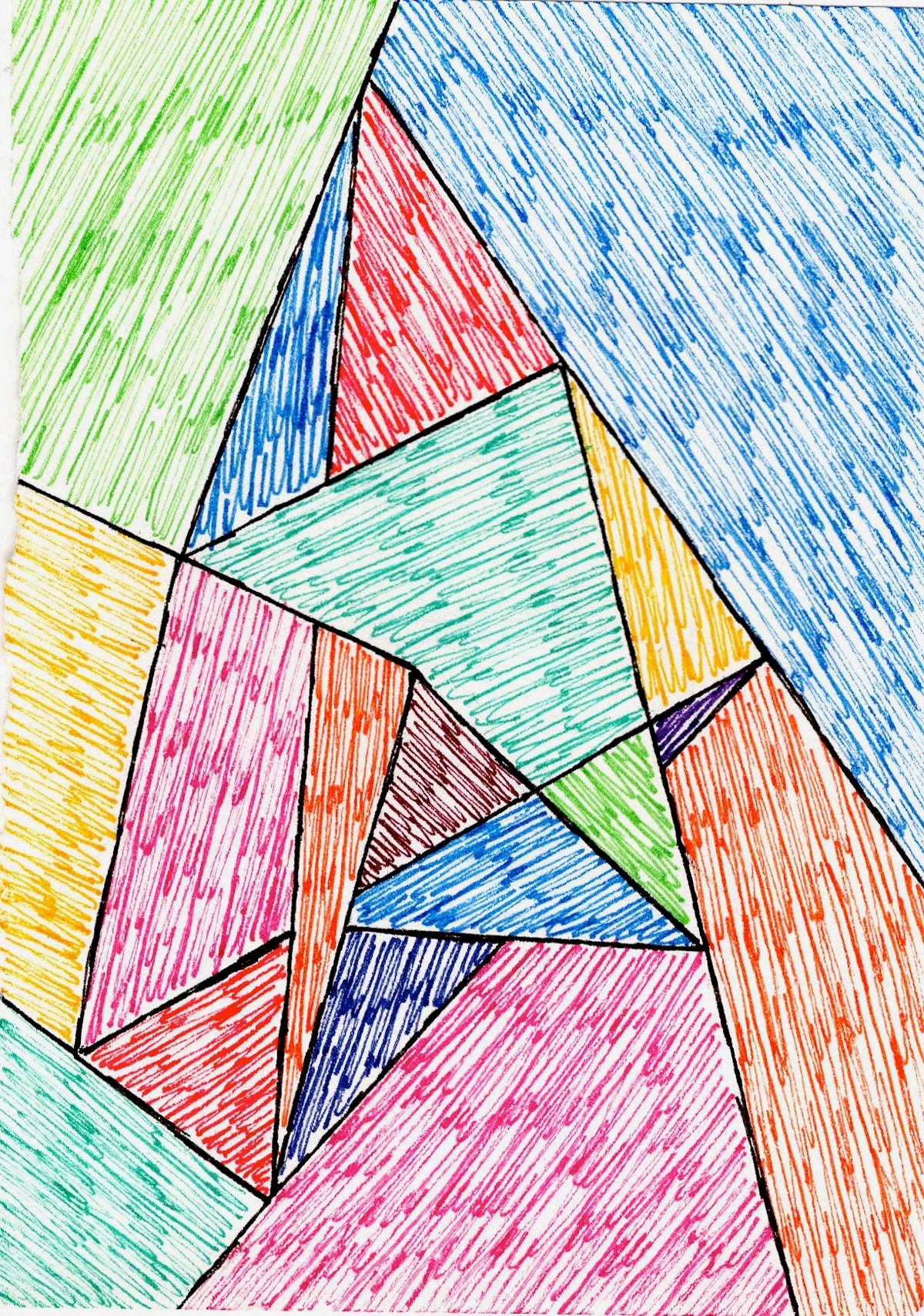
What if my kitchen is very traditional or rustic?
Even traditional or rustic kitchens can be elevated with art! The key is to select pieces that complement the existing aesthetic rather than clashing with it. For traditional spaces, classic still life paintings (perhaps updated with a modern color palette), botanical prints, or framed antique maps can work beautifully. Rustic kitchens thrive with art that embraces natural textures and earthy tones, such as abstract landscapes, pieces made from reclaimed wood, or hand-crafted ceramics. Consider art that evokes a sense of history or artisanal craftsmanship. The goal is to enhance the established charm, adding layers of visual interest that feel authentic to the space. You might find inspiration in how decorating-with-art-in-modern-farmhouse-interiors approaches integrating art into a similar aesthetic. Consider vintage botanical prints, antique culinary illustrations, or even beautifully crafted wooden sculptures for a truly authentic feel that honors the history and warmth of a traditional space. This ensures the art feels like an organic extension of your home's character, rather than an afterthought.
Absolutely not! While food-themed art can be charming, appropriate, and wonderfully inviting, it's by no means a strict rule or even a requirement. Your kitchen is a vital part of your home, and the art you choose for it should reflect your overall personal style, your unique personality, and the broader aesthetic of your home. Abstract art, serene landscapes, vibrant botanicals, crisp geometric patterns, or even compelling portraits can look absolutely fantastic and add an unexpected layer of sophistication. Think about what truly makes you happy, what sparks joy and inspiration, rather than just what's literally connected to food. The best art transcends its subject matter and connects with you on an emotional level – and that connection is far more important than a literal depiction of a lemon. I've seen kitchens with stunning abstract art, like my own colorful pieces, that have absolutely nothing to do with food, yet they feel utterly at home. So, liberate yourself from the expectation of strictly 'kitchen-y' themes and embrace the full spectrum of artistic expression!
What if I have an open-concept kitchen/living space?
This is a fantastic opportunity for art to truly shine and tie your entire living area together! In an open-concept space, your kitchen art needs to communicate with the art and decor in the adjacent living or dining zones. Consider a cohesive color palette or a similar artistic style that subtly flows between the areas. A large, impactful abstract piece in the kitchen, for example, could share a color accent with throw pillows in the living room, or a series of framed botanical prints might echo a natural theme in both spaces. Art can act as a visual bridge, creating a sense of continuity and thoughtful design throughout your open plan. It’s about creating a unified visual story, where each area, including the kitchen, is a chapter. Think of your entire home as a curated gallery, with the kitchen being a particularly vibrant and integral room within it. Sometimes, using a large, impactful piece in a shared wall space can serve as a visual anchor, subtly connecting the different zones and creating a harmonious flow throughout your living environment. This approach elevates the entire living space, ensuring that every glance offers a cohesive and pleasing aesthetic, making the transition between functional zones seamless and artful.
What size art is best for a kitchen?
It really, truly depends on the specific space you have available! For large, expansive empty walls (perhaps above a dining area or a long stretch of wall), a single substantial piece of art or a thoughtfully arranged gallery wall can work wonders, creating a powerful focal point. For smaller nooks, narrow wall slivers between cabinets, or above a small appliance, smaller framed pieces or even a series of mini prints can be absolutely perfect, adding charm without overwhelming the space. The overarching key, always, is proportion. The art should feel balanced and harmonious with the wall space and surrounding kitchen elements – not too big, not too small. Don't be afraid to measure the space meticulously, cut out paper templates the size of your potential artwork, and tape them to the wall to visualize before you commit. This simple trick can save you a lot of headache and ensure your chosen piece feels 'just right'. For further guidance on maximizing impact in compact areas, consider abstract-art-for-small-spaces:-maximizing-impact-in-compact-areas or even art-above-the-sofa-a-guide-to-perfect-placement-and-scale (the principles of scale apply universally!). Remember, sometimes a single, perfectly scaled piece makes a much stronger statement than a cluttered collection. It's about impact and intention, not just filling space. Trust your instincts on what feels balanced and harmonious in your unique kitchen. And if you're ever in doubt, literally stepping back and observing the space from different angles can offer surprising insights into whether a piece feels 'right' or not.
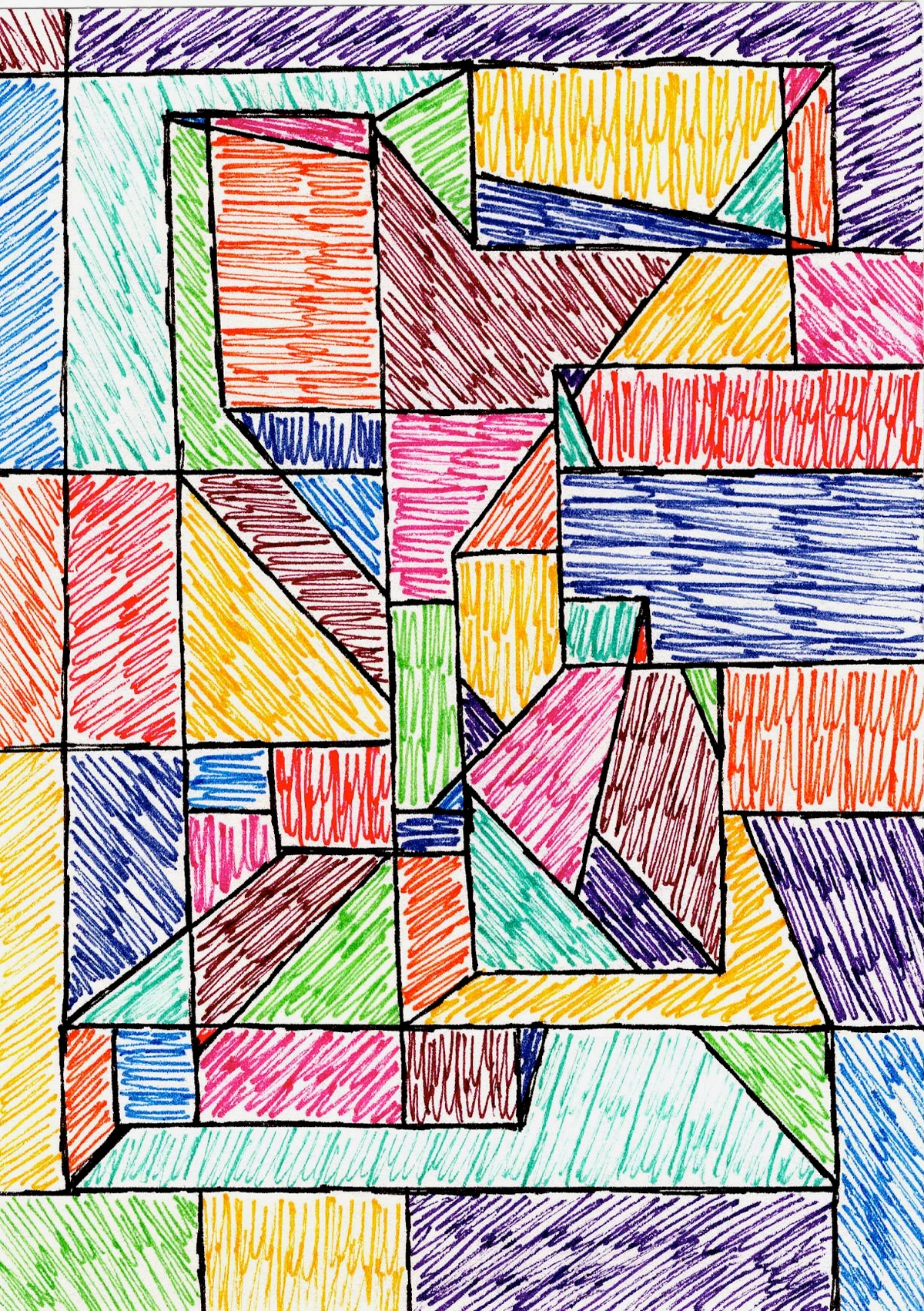
What about a kitchen gallery wall?
Gallery walls are fantastic for injecting personality and telling a visual story, even in the kitchen! The key here is consistency in durability. Mix and match different durable media like framed metal prints, acrylic panels, and framed prints under glass. Consider a unifying element, like matching frame colors, a consistent theme (e.g., botanicals, abstract shapes), or a cohesive color palette to tie it all together. Just remember the practicalities we've discussed: keep delicate pieces out of direct splash zones and ensure everything is securely mounted. You can find more tips on creating stunning, dynamic displays in curating-a-gallery-wall-with-abstract-art:-tips-for-a-dynamic-display. And don't be afraid to incorporate three-dimensional elements, like small, durable sculptures or decorative ceramic plates, to add another layer of visual interest to your gallery wall. This creates a dynamic, multi-textured display that draws the eye and invites closer inspection, making your kitchen gallery truly engaging and a reflection of your evolving tastes. It's an opportunity to curate your own mini-museum right in your home.
How often should I change my kitchen art?
There's no hard and fast rule, but I'm a big believer in refreshing your space! Swapping out a piece or two every season, or even just when you feel like a change, can completely revitalize your kitchen's feel and keep things interesting. It keeps the space dynamic, allows you to experiment with different moods or themes, and prevents visual fatigue. Think of it as re-dressing your kitchen for the occasion, or simply giving it a fresh perspective! You might even have a small collection of 'kitchen-safe' art that you rotate through, making it an easy and fun process. It's a wonderful way to keep your home feeling fresh and responsive to your evolving tastes. Think of your kitchen art collection as a living entity, constantly evolving and reflecting new inspirations, much like my own artistic journey. This approach also allows you to experiment with different themes and color palettes without committing to a permanent change, keeping your kitchen's aesthetic vibrant and interesting. It's a simple, yet powerful way to keep your environment stimulating and aligned with your current mood.
Where should I buy kitchen-appropriate art?
Look for galleries and online platforms that specialize in durable prints (giclée, metal, acrylic) or robust mediums like ceramics. Local art markets and craft fairs can be treasure troves for unique, handmade ceramic art or well-protected, smaller framed pieces. When browsing, always keep the material resilience and ease of cleaning in mind. And of course, don't forget to explore collections like my own abstract pieces – many are available as durable prints designed to last and bring vibrant energy to any room, including your kitchen! Always prioritize quality and proper protection for a lasting investment. Sometimes, even unexpected places like antique shops can yield hidden gems, but always with the caveat of needing proper protection. Online marketplaces specializing in art prints and custom framing are also excellent resources for durable, kitchen-ready options. Don't forget to check out independent artists on platforms like Etsy or local art collectives; you might discover a unique, handmade piece that perfectly captures your kitchen's spirit. It’s about seeking out both the practical and the poignant, finding art that truly speaks to you while being fit for purpose.
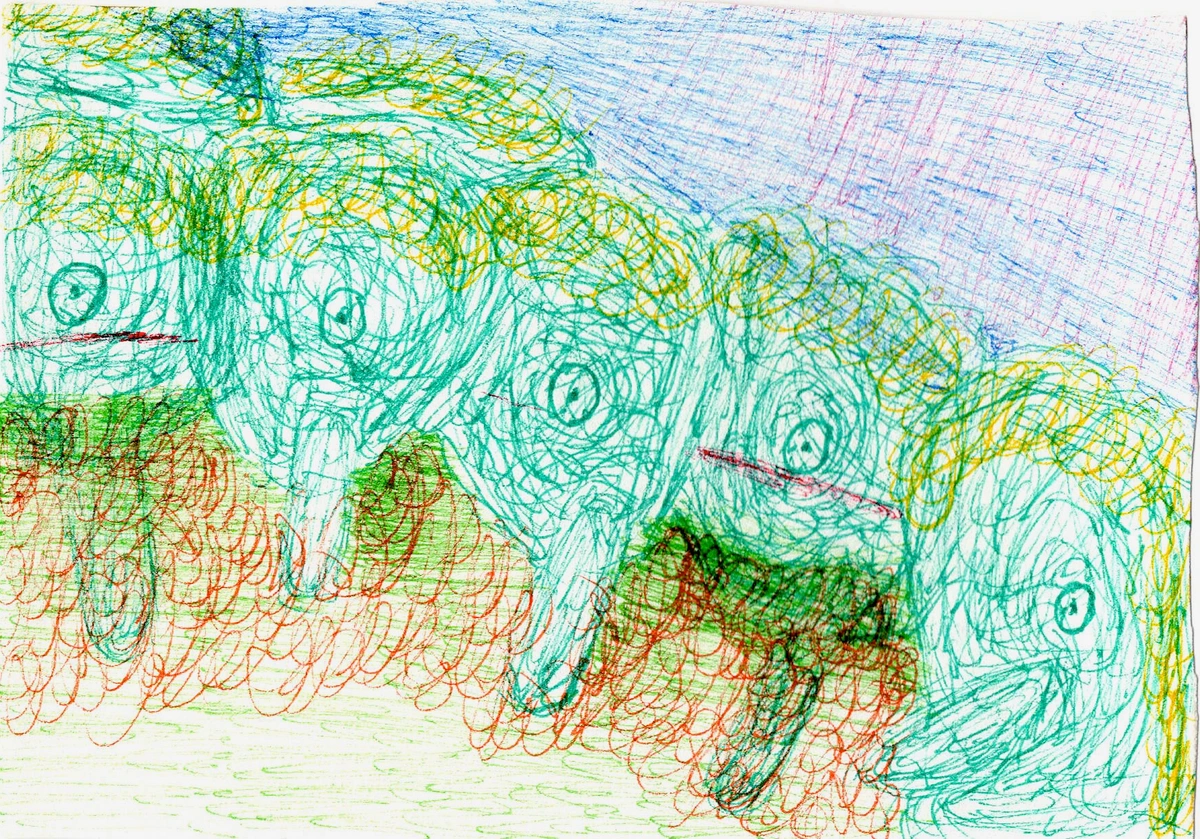
Can I use temporary or removable art in the kitchen?
Absolutely! For those who love to change things up frequently, or for renters, temporary art is a fantastic solution. High-quality vinyl wall decals, adhesive art prints designed for easy removal, or even decorative magnets on your fridge or a magnetic board can offer a lot of visual impact without permanence. These options are typically easy to clean and won't damage your walls. It’s a low-commitment way to experiment with different styles and colors, keeping your kitchen decor fresh and exciting without the need for tools or major redecoration. Plus, it's a great way to involve kids by letting them pick out their own removable art pieces for a designated area! This approach makes art accessible and fun, encouraging creativity without the stress of permanence or damage. It's an ideal solution for renters, students, or anyone who simply loves to refresh their decor frequently without the commitment of traditional art installation. It truly liberates you to play with your space, making your kitchen a dynamic and ever-evolving canvas.
Final Thoughts: Your Kitchen, Your Canvas
Ultimately, choosing art for your kitchen is about so much more than just filling a blank wall; it's about making the space uniquely, beautifully yours. It's about bringing personality, joy, and that wonderful touch of the unexpected into a room that's often purely functional. Don't be afraid to experiment, to break a few 'rules' (especially my own, if they don't quite fit your vision!), and most importantly, to choose pieces that you genuinely connect with. Whether it's a vibrant abstract piece from my collection that energizes your morning coffee routine, a serene landscape that brings calm to your cooking, or a quirky print that makes you smile, let your kitchen art tell a story – your story. The most meaningful art is, after all, the art that truly speaks to you. It's about creating a space that nurtures your spirit, sparks your creativity, and makes every meal an experience rather than just a necessity.
So, go explore! Visit a local art gallery, wander through a museum like the den-bosch-museum for unexpected inspiration, or simply browse online, perhaps even exploring some of my latest abstract works. The journey of finding the perfect pieces for your kitchen is part of the fun, a delightful hunt that culminates in a space that truly reflects you. And when you get it right, the transformation is truly remarkable – a kitchen that's not just for cooking, but for living, dreaming, and creating. Happy decorating, and enjoy painting your story onto the canvas of your culinary sanctuary! Remember, art in the kitchen is about enriching your daily life, one delicious brushstroke at a time. It’s an ongoing adventure, so embrace the process and delight in the discoveries. Don't let perceived 'rules' or anxieties about practicality hold you back from infusing your kitchen with the beauty and inspiration it deserves. After all, a kitchen filled with art is a kitchen filled with soul.
Ready to embark on your kitchen art journey? Share your experiences, challenges, and triumphs with us. What art piece transformed your kitchen? What unexpected spot did you discover for a cherished artwork? Your stories inspire others and continue to weave the rich tapestry of art in everyday life. Happy decorating, and enjoy painting your story onto the canvas of your culinary sanctuary! Remember, art in the kitchen is about enriching your daily life, one delicious brushstroke at a time. It’s an ongoing adventure, so embrace the process and delight in the discoveries. It’s all about infusing your home with intention and personality.


